

10 Problem-Solving Scenarios for High School Students
It is certainly common to come across difficult situations including forgetting an assignment at home or overusing your phone only to miss an important project deadline. We are always surrounded by little difficulties that might become bigger problems if not addressed appropriately.
Whether it is saving your friend from the addiction to social media platforms or communicating your personal boundaries to relatives, problem-solving skills are one of the important skills you need to acquire throughout the journey of life.
Do you think these skills are in-built with other high school students? Certainly not.
It takes innovative learning methodologies just like problem-solving scenarios that help you immerse in the subject matter with precision. With problem-solving scenarios, you come across a range of problems that help you build critical thinking skills, logical reasoning, and analytical techniques.
The article will take you through scenarios that are a combination of various problems that need to be addressed strategically and carefully. As you read ahead, make sure to brainstorm solutions and choose the best one that fits the scenario.
Helpful scenarios to build a problem-solving attitude in high schoolers
Learning through scenarios helps students look at situations from a completely analytical perspective. Problem-solving scenarios offer a combination of various situations that test the thinking skills and growth mindset of high school students. The below-mentioned scenarios are perfect for implementing problem-solving skills simply by allowing open discussions and contributions by students.
1. Uninvited Guests

You have arranged a party at your home after successfully winning the competition at the Science Fair. You invite everyone involved in the project however, one of your friends brings his cousin’s brother along. However, you have limited soft drink cans considering the number of invited people. How would you manage this situation without making anyone feel left out?
2. Communication Issues

A new teacher has joined the high school to teach about environmental conservation. She often involves students in different agriculture activities and workshops. However, one of your friends, John, is not able to understand the subject matter. He is unable to communicate his doubts to the teachers. How would you motivate him to talk to the teacher without the fear of judgment?
3. Friendship or Personal Choice?

The history teacher announced an exciting assignment opportunity that helps you explore ancient civilizations. You and your friend are pretty interested in doing the project as a team. One of your other friends, Jason, wants to join the team with limited knowledge and interest in the topic. Would you respect the friendship or deny him so you can score better on the assignment?
4. Peer Pressure

It is common for high schoolers to follow what their friends do. However, lately, your friends have discovered different ways of showing off their skills. While they do all the fun things, there are certain activities you are not interested in doing. It often puts you in trouble whether to go with friends or take a stand for what is right. Would you take the help of peer mentoring activities in school or try to initiate a direct conversation with them?
5. Team Building

Mr. Jason, the science teacher, assigns different projects and forms teams with random classmates. There are 7 people in each team who need to work towards project completion. As the group starts working, you notice that some members do not contribute at all. How will you ensure that everyone participates and coordinates with the team members?
6. Conflict Resolution
The drama club and the English club are famous clubs in the school. Both clubs organize various events for the students. This time, both clubs have a tiff because of the event venue. Both clubs need the same auditorium for the venue on the same date. How would you mediate to solve the issue and even make sure that club members are on good terms with each other?
7. Stress Management

Your school often conducts different activities or asks students stress survey questions to ensure their happiness and well-being. However, one of your friends always misses them. He gets frustrated and seems stressed throughout the day. What would you do to ensure that your friend gets his issue acknowledged by teachers?
8. Time Management

Your friend is always enthusiastic about new competitions in high school. He is running here and there to enroll and get certificates. In this case, he often misses important lectures and activities in class. Moreover, his parents complain that he misses swimming class too. How would you explain to him the importance of prioritizing and setting goals to solve this issue?
9. Educational Resources
You and your friends are avid readers and often take advice from books. While most must-read books for bibliophiles are read by you, it is important to now look for other books. However, you witness that the school library lacks other important books on philosophy and the non-fiction category. How would you escalate this issue to the higher authorities by addressing the needs of students?
10. Financial Planning

Finance is an important factor and that is why your parents help you plan your pocket money and budgeting. Off lately, they have stopped doing so considering that you can manage on your own. However, after a few months, you have started spending more on games and high-end school supplies. You realize that your spending habits are leading to loss of money and reduced savings. How shall you overcome this situation?
Wrapping Up
Involving students in different learning practices and innovative ways inspires them to think out of the box and make use of imagination skills. With the usage of different problem-solving scenarios, high school students get an opportunity to delve into realistic examples and consequences of different incidents.
Such scenarios offer an excellent way to promote understanding, critical thinking skills and enhance creativity. Ensure to use different activities and games for creating a comprehensive learning environment.

Sananda Bhattacharya, Chief Editor of TheHighSchooler, is dedicated to enhancing operations and growth. With degrees in Literature and Asian Studies from Presidency University, Kolkata, she leverages her educational and innovative background to shape TheHighSchooler into a pivotal resource hub. Providing valuable insights, practical activities, and guidance on school life, graduation, scholarships, and more, Sananda’s leadership enriches the journey of high school students.
Explore a plethora of invaluable resources and insights tailored for high schoolers at TheHighSchooler, under the guidance of Sananda Bhattacharya’s expertise. You can follow her on Linkedin
Leave a Comment Cancel reply
Save my name, email, and website in this browser for the next time I comment.
- WV App Login
- Site Search
- Report Templates
- Speech Helpers
- SLP Resources
- Top 10 Tips
- Getting an Eval
- Certified SLP
- How to Say the R Sound
- 0-18 Months
- 18-36 Months
- 18-30 Months
- 30-36 Months
- 10-11 Years
- Articulation
- Cleft Palate
- Phonological
- Dysphagia Causes
- Dysphagia Treatment
30 Problem Solving Scenarios for Speech Therapy Practice
As promised here are the words for your unlimited use .
If you know others who can use our lists ...
... please share this page using our site share buttons.
Explore Our Goal Achieving, Client Centered Products
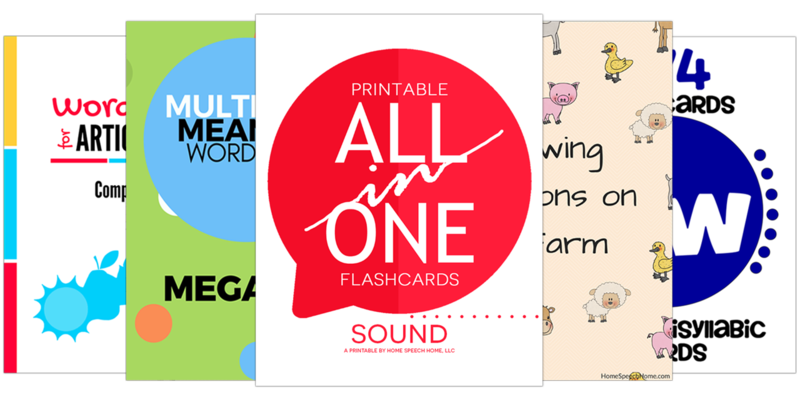
SEE ALSO: Houston We Have a Problem! Activities for Problem Solving
Problem solving scenarios.
- Your friends came over to your house for a movie night. One of your friends brought another friend so there are more people than you planned for. You want to pass out the drinks but you only have five cans of soda and you need 6 for everyone to have one. What could you do?
- After basketball practice you go back to the locker room with your team to shower and change. When you are done dressing, you can't find your shoes. What could you do?
- You have been waiting all day for lunch to come because you are starving. Finally class gets over and you get to go to lunch. Except when you go to get to your lunch, it's not there. You probably left it at home. What could you do?
- There is a guy in your class who is always mean to you. He always bumps you when he walks by and he calls you names. He knocks stuff out of your hands and makes you feel stupid. You don't think you can take it anymore. What could you do?
- You really want to invite this new girl/guy to come to your birthday party, but you have never talked to them before. You are worried they will say no. What could you do?
- You rode the bus to school today and on the way in people are pointing and laughing at you. You go in the bathroom and see that you have pink gum all over the back of your pants. What could you do?
- You wake up and see that your alarm never went off. So you are starting your morning 15 minutes later than you planned. It is a really important day at school and you cannot be late. What could you do?
- You are giving a group presentation in front of class and it's your turn to talk. All of the sudden you sneeze. You cover it with your hand, but now your hand is full of stuff you sneezed out. What could you do?
- You are eating dinner at a fancy restaurant with your parents and their friends. You have a really messy dinner and accidentally flip a noodle into the lady's lap. They are busy talking and don't notice it. What could you do?
- You are taking a test and there is no talking allowed. You are writing your answers on the paper and your pencil breaks. What could you do?
- You are taking a test and the guy behind you asks you for help. He wants to know what you put for question number two. What could you do?
- You are at a birthday party and you have waited in line for a long time for your turn to hit the pinata. It is finally going to be your turn and it looks like the next hit will break the pinata. But you suddenly have to go to the bathroom. What could you do?
- You are hanging outside with your friend and she decides to pick your neighbor's flowers. She gives you the pretty handful of flowers and right then your neighbor opens the door. She asks you why you picked her flowers. What could you do?
- You borrowed your sister's skates one day without asking and they broke while you were using them. What could you do?
- You are eating at a friend's house and the mom piles your plate full of food. It looks really good and you want to eat it all but you can't because you just ate a snack. What could you do so you don't hurt her feelings?
SEE ALSO: The Best Free App for Speech Therapy

- Your teacher was working at her desk. You wanted to ask her a question, but she didn't see your hand raised. What should you do?
- You started to do your work, but you weren't sure if you were doing it right. What should you do?
- You were playing tether-ball and were the champion so far. In the next game, you slightly touched the rope. Only one student saw you touch the rope. What will you do?
- The teacher is giving directions, but your friend sitting next to you keeps talking. You can't hear the directions. What should you do?
- You didn't do your homework. Your teacher was upset with you. What should you do?
- You finished eating and felt a burp coming. What are you going to do?
- You were waiting to swing. When it was your turn, another boy jumped in front of you and took the swing. What would you do?
- You waited a long time, but your mom didn't come to pick you up after school. What should you do?
- A bully threatened to beat you up after school. What should you do?
- A boy on the playground keeps pushing you and making you mad. What would you do?
- You were sitting in class doing your work and you hear the fire alarm. What should you do?
- An adult you didn't know came on to the playground and asked if you would help look for his lost dog. What would you do?
- You forgot your lunch at home. What would you do?
- The person sitting behind you keeps tapping your chair with his foot. What should you do?
- You finished your work early. What should you do?
This list of functional words was professionally selected to be the most useful for a child or adult who has difficulty with problem solving scenarios.
We encourage you to use this list when practicing at home.
Home practice will make progress toward meeting individual language goals much faster.
Speech-Language Pathologists (SLPs) are only able to see students/clients 30-60 mins (or less) per week. This is not enough time or practice for someone to handle Problem solving scenarios.
Every day that your loved one goes without practice it becomes more difficult to help them.
SEE ALSO: The Best Books for Speech Therapy Practice

We know life is busy , but if you're reading this you're probably someone who cares about helping their loved one as much as you can.
Practice 5-10 minutes whenever you can, but try to do it on a consistent basis (daily).
Please, please, please use this list to practice.
It will be a great benefit to you and your loved one's progress.
Activities and Product Discounts, Oh My! Sign up for Terrific Therapy Emails
See Past Email Examples
Your information is 100% private & never shared .

Hi! We're Luke and Hollie.
We are both MS CCC-SLPs and fell in love while studying for our degrees. Since then we have done everything together - graduated, worked, and started a family. We spend most of our time with our family and the rest making this site for you.

Top Free Resources

Word Vault Essential
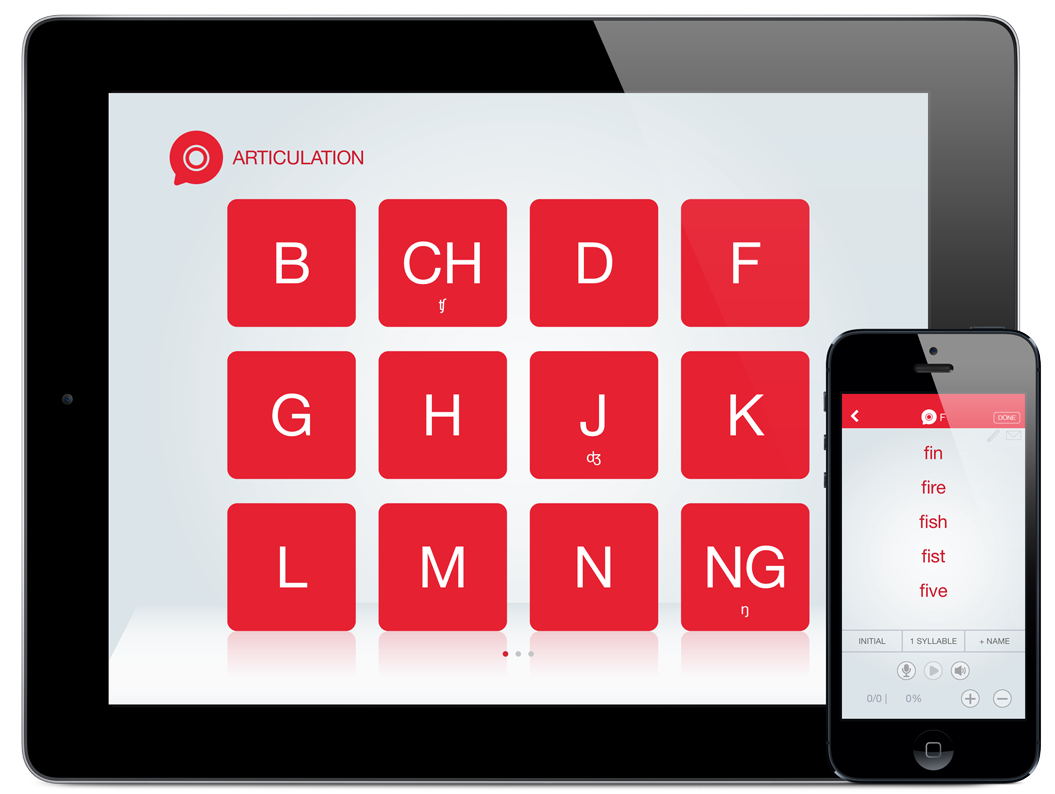
# 1 Chronological Age Calculator
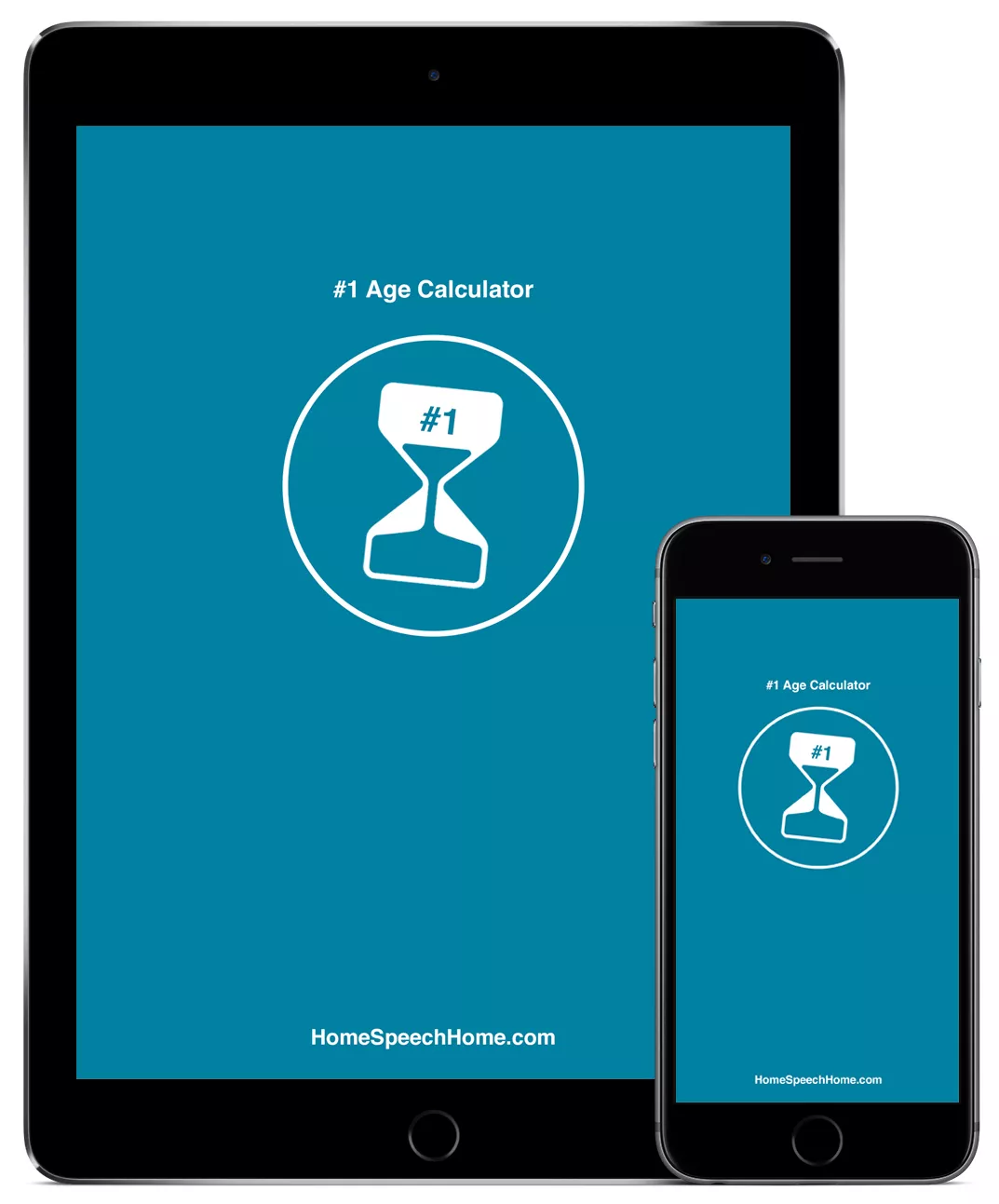
Popular Materials
All in one printable flashcards.
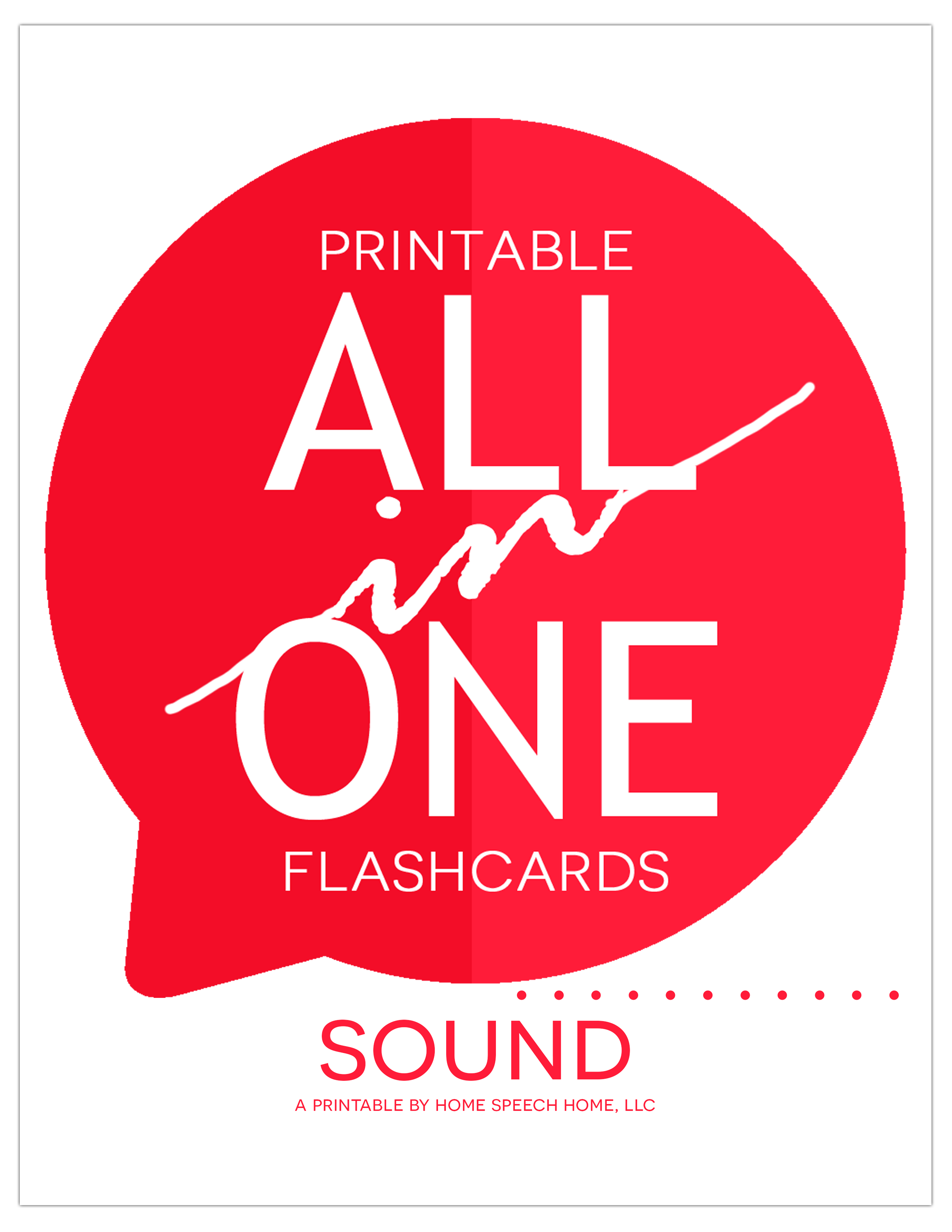
Multiple Meaning Word Mega Pack
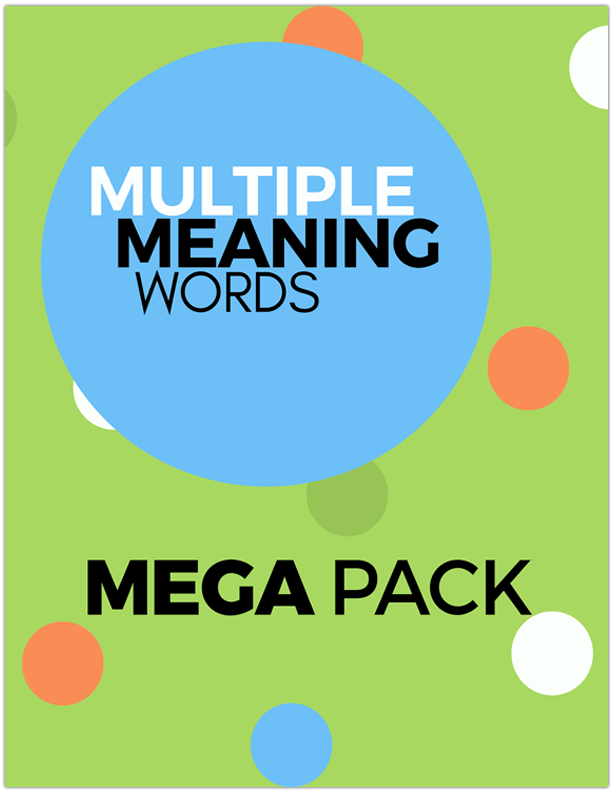
Complete Articulation Word Search
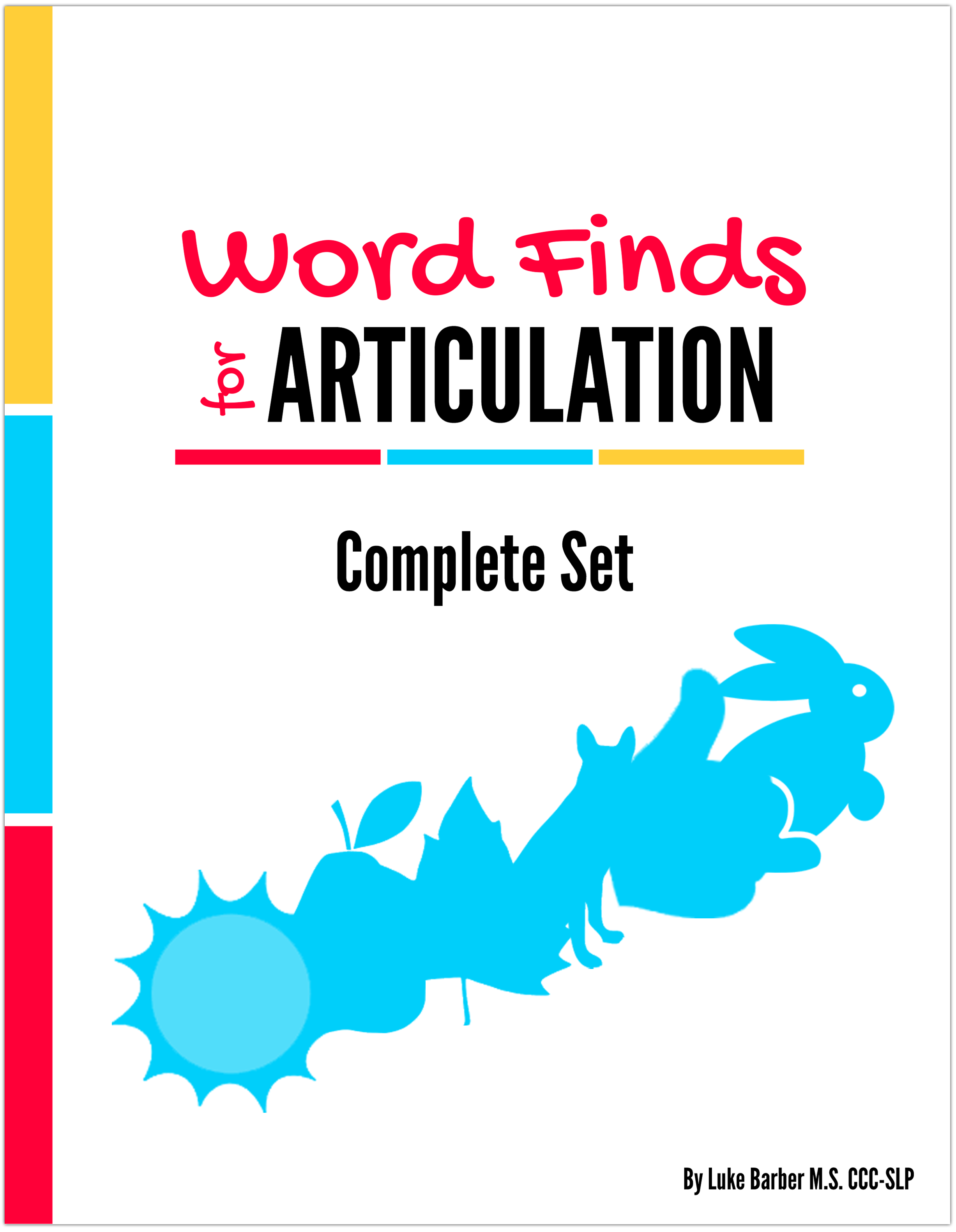
New! 111 Articulation Stories
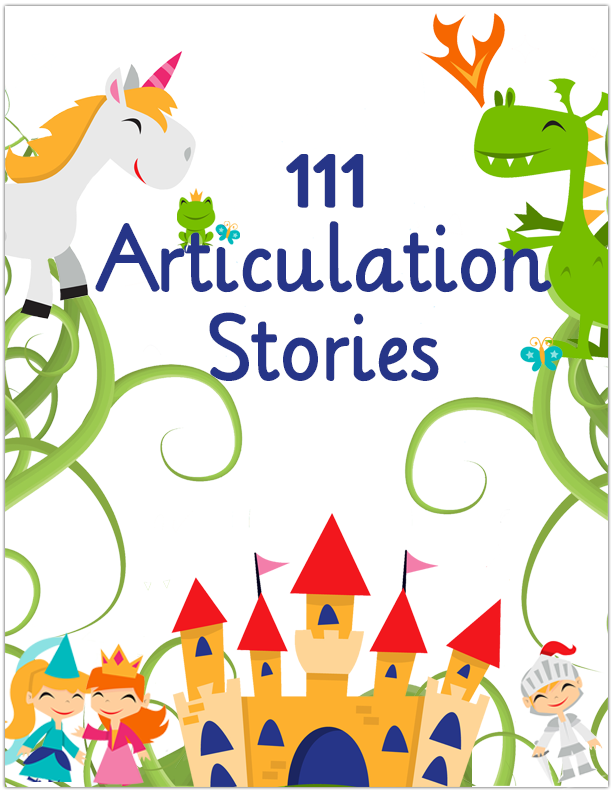
Teaching the Sound Books
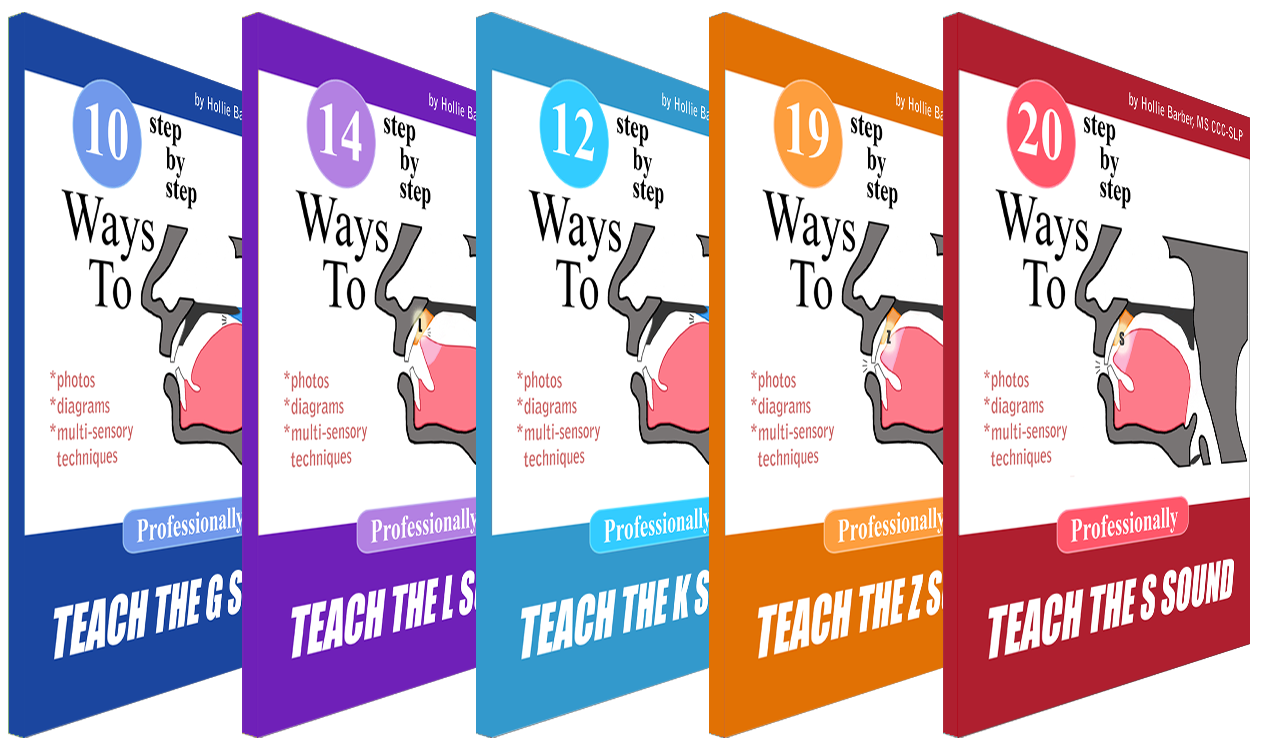
Multi-Syllabic Words Flashcards
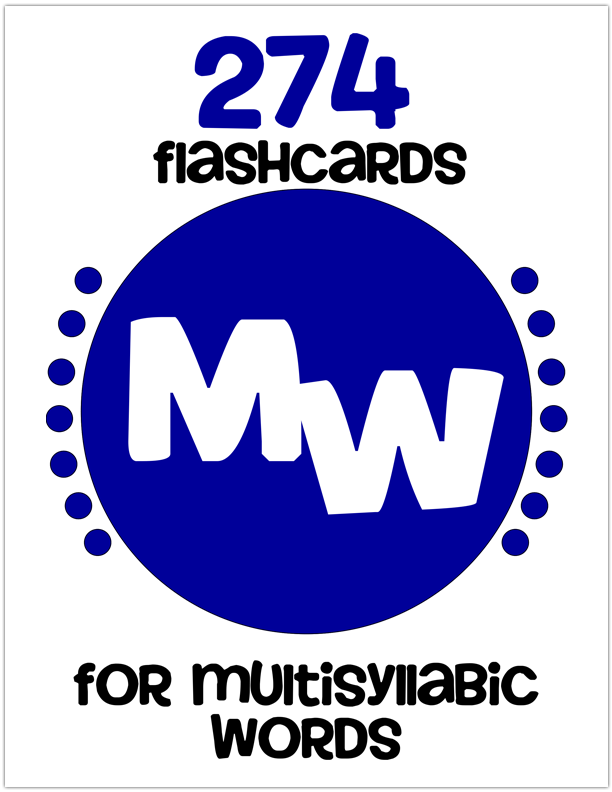
Apps to Save You Time & Help Your Clients
Articulation therapy + pirate adventures = awesomeness.

This App Will Get Your Kids Talking

Image Credits
Copyright © 2010 –
HomeSpeechHome.com | All Rights Reserved
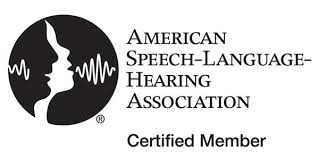
This website contains affiliate links, meaning if you buy something from them we may make some money (at no cost to you). By using our affiliate links, you are helping to support our site which is a U.S.-based, family-run small business :)
10 Problem Solving Activities for High School Students
Published on march 15, 2017 at 12:01 am by ethan jacobs in lists , news.
Why should we care about problem solving activities for high school students ? What’s the fastest way to get to and from work? How can I complete a task more efficiently? What should I have for lunch today? No matter the size, scale, or ramifications, we all encounter scenarios every day that require the very best of our decision-making abilities. The approaches that we employ to solve these problems can be every bit as diverse as the problems themselves.
Sometimes we crowdsource, other times we decide using trial and error, and in a pinch, we solicit the unerring wisdom of Siri. What happens though, when there simply is no collection of experts to whom we can appeal and we’re devoid of the familiar technology that helps make our decisions for us? Computers do an excellent job of automating processes, but are incapable of the initial pattern recognition required to identify the most efficient solution available. What’s more, in a time crunch, trial and error won’t stand you in good stead; you’ll have to decide in an instant. This need for self-reliance in decision-making scenarios makes critical thinking, the ability to use facts, knowledge and data to successfully solve problems, absolutely indispensable. This is further reflected by the recent trend of rapid growth in demand across industries that seek talent with considerable problem-solving abilities, as well as the increased use of problem solving activities in the workplace to continue employee development.

Marijus Auruskevicius/Shutterstock.com
In order to best set the next generation up for success in this regard, it’s critical to begin fostering these skills from an early age. Beginning in high school or earlier, problem solving enables students to apply what they’ve learned as opposed to merely recalling information that they have been spoonfed, equipping them with an arsenal of tools and approaches to tackle issues that may have previously seemed uni-dimensional. This ability, in turn, transforms the rigors of academic learning into that something that’s applicable at a professional level, simultaneously silencing the familiar “when will I ever use this?” chorus to which educators have become so accustomed. Whether carried out in individual or group settings, problem solving activities help students develop critical skills such as leadership, teamwork, creativity, persistence, and incremental improvement through repetition.
And if you are looking for more brain thinking activities we have a similar read – 10 Best Team Building Problem Solving Activities .
In addition to discovering new, useful techniques with which to tackle problems, students that are immersed in problem solving endeavors learn effective ways to present their findings once all is said and done, providing them with valuable written and oral skills in addition to those included in the aforementioned list. In short, when teachers present students with problems and task them with finding a solution, teachers can ensure that their students are prepared for challenges that they will encounter after graduation. We searched the web looking for the best problem solving games, and took the recommendations from various sources, such as Concordia , and Stanford to name a few. Here is a list of 10 problem solving activities for high school students to help them sharpen their skills.
10. Protto: Problem Lotto
Played individually, or with partners, this competitive game involves creative thinking and teaches students that problems often have more than one solution, and that sometimes one solution can be used for more multiple problems.
Overview: Students divide one sheet of paper into four quadrants by drawing one vertical and horizontal line. Each quadrant represents a problem that the students have selected from a designated list of problems. The teacher may randomly draw cards or have students draw blindly from a set of cards that have solutions printed on them. If a solution fits a problem listed in one of the students’ quadrants, they may write the solution in that quadrant. If the solution fits for more than one problem quadrant, the student may write it in each quadrant where it applies. The first student to fill out all four quadrants and shout ‘Protto!’ is the winner. The teacher serves as the games judge. And now, let’s see what else we have in our list of problem solving activities for high school students.

9. Pulling Pockets
The next one in our list of problem solving activities for high school students is played with an entire class divided into teams of equal size, this activity targets students’ ability to think quickly, cooperate, and collaborate to come up with as lengthy a list as possible. Using “pockets” (anything that can be closed, such as a bag, jar, envelope, etc.) that contain problem scenarios within them (on a slip of paper or card), teams compete by taking turns providing viable solutions to the problem contained in the pocket over a 60-second span. For example, if a pocket’s problem is “I forgot my homework,” each team, starting with the team that selected the pocket, will provide a solution to the forgotten homework problem. A panel of independent judges will decide whether a proposed solution is viable. The round ends when the 60 seconds ends or when no more new solutions can be produced.

ThefotosoloNo1/Shutterstock.com
8. Solution Bee
Played with an entire class divided into teams, this game is similar to a spelling bee with respect to its round-by-round guessing elements, and encourages students to broaden their innovative thinking capabilities. Although it certainly has elements of luck, this activity also relies heavily on creativity. One at a time, students blindly select one card from a fanned deck that the teacher is holding. On the card that the student picks will be a problem, which the teacher will read aloud, as well as a solution to that problem, which is meant to be kept secret. The competing teams will take turns guessing the ‘best’ solution to the problem read by the teacher until one side guesses the correct answer and earns a point for their team. The process is then repeated with another student selecting a new card. A follow-up discussion can be had among the students after each round about whether the written solution actually represents the best method of solving the problem.

7. Brainstorm Bonanza
This problem-solving activity that ranks 7th in our list of problem solving activities for high school students is applicable across all academic disciplines and is a great way to help students further develop their understanding of a particular topic. For example, if a literature class is discussing a book, which was not a resounding success, or was poorly-received by readers, students may brainstorm ways that the author could have created a more effective piece. The brainstorming process can take place individually or in groups, using paper or a whiteboard.

Copyright: jezper / 123RF Stock Photo
6. Group Therapy
A class can collaborate to design and decorate a locked box with a slot cut into it at the top. Into this box, students can anonymously jot down and submit problems that they may be having in their lives, be they in your class, another class, or entirely outside of school that they are having trouble solving on their own. Every now and again, a student or teacher can draw a problem slip from the box, read it to the class, and solicit suggestions from everyone. The entire class can brainstorm solutions and discuss their merit as a group.

5. Survivor Scenarios
Create an imagined circumstance that involves students working together in order to survive. One such scenario might involve being trapped in a remote area, such as a mountain range, with limited supplies and no way of communicating with the outside world. Students must prioritize the items that they have at their disposal, and discuss how they will use one another’s strengths and weaknesses to gather necessary resources and establish lodging to survive an indefinite period of isolation until help is able to arrive and rescue them. More ideas for problem solving activities for high school students are coming, just click on Next.

YUTTANA HONGTANSAWAT/Shutterstock.com
4. Moral Dilemma
We are continuing with the number 4 in our list of problem solving activities for high school students – brainstorm a number of issues with potential moral grey areas that your students might face on a day-to-day basis, jot them down and place them in some kind of container. Draw a scenario from time to time and present the issue to the students to promote brainstorming of potential solutions and discussion of solution merits. One such dilemma might involve life-saving: Two people are trapped in a car hanging on the edge of a cliff. Pulling one person from the car will cause a weight imbalance that causes the car to fall off of the edge of the cliff. You must save one person, or the car will fall and both will die. Who will you save?

Stokkete/Shutterstock.com
3. Amoeba
We are continuing our list of problem solving activities for high school students with “Amoeba” that is a straightforward activity that can serve as a trust exercise, warm-up, or group problem-solving activity. It involves movement, and is a great way of breaking the ice. Using a large rope or some form of webbing, create a loop and place it on the floor. Have all students step into the enclosed loop and pick it up at waist level so that it encloses everyone. Tell students that they may not drop the rope and must collectively move to a given point in the room. The smaller or tighter the loop, the more difficult the activity becomes, and the more teamwork is required. Obstacles can be added at the teacher’s discretion to make the activity particularly difficult. Once the activity has concluded, debriefing discussions about working as a team, considering the needs of others, and effectively communicating can be held.

2. Quarto
This two-player logic game ranks second in our list of problem solving activities for high school students. It closely-resembles Connect Four, and uses a 4×4 board and 16 different pieces with no two pieces that are exactly alike. The pieces are either dark, light, tall, short, square, rounded, hollow, or solid. The objective of the game is to form a line in which all pieces have something in common (i.e. a line of all dark pieces, a line of all short pieces, etc.). The trick to this game is that there is a pick your poison element involved in that a player’s opponent has to pick the piece that the player must use on each turn, rather than the player getting to choose their own piece.

Ballda/Shutterstock.com
1. What can you do with ______?
Bring in a collection of everyday household items and select one to present to the class. Allow students to examine the item closely and determine the various functions that the item could perform, encouraging innovation, creativity and in-class discussion. Students may be given a defined period of time in which to brainstorm and write down the uses that they have thought of. For example, if a crate is brought in, students might suggest functions such as: carrying vessel; flower bed/ pot; chair/ seating device; book rack, etc. Points may be awarded for the most creative answers.

Kellis/Shutterstock.com
The importance of using critical thinking skills on a day-to-day basis will only continue to grow over time. Trying out these problem solving activities for high school students in your next class is a sure-fire way to sharpen your students’ skills in a way that’s sure to keep everyone engaged.
Slideshow List XFinance Survivor Scenarios Problem Lotto group activity Quarto critical thinking game amoeba problem solving activity activities to improve creativity Protto critical thinking exercise What can you do with this activity Group Therapy brainstorming exercise activities to improve teamwork skills Solution Bee critical thinking exercise Pulling Pockets problem solving activity Moral Dilemma critical thinking exercises Brainstorm Bonanza critical thinking activity 10 Best Team Building Problem Solving Activities brainstorming activities for high school students problem solving activities for high school students critical thinking exercises for high school students 10 Problem Solving Activities for High School Students activities to improve persistence in high school students Show more... Show less

15 Problem solving activities for students

In this guide
- 1. The detective game
- 2. Help ‘em out
- 3. What if…
- 4. Move IT!
- 5. The build
- 6. Just survive
- 7. Good old scavenger hunt maybe with a twist
- 9. Tower of terror
- 10. Community problem solving
- 11. Community problem solving documentary
- 12. Digital storytelling
- 13. Minefield/Lead the blind
- 14. Design sprints
- 15. Debates
Problem solving entails identifying, analyzing, and addressing challenges or obstacles using critical thinking, creativity, analytical skills, and reasoning. The World Economic Forum consistently ranks critical thinking and problem solving as top skills for the future in their list of essential abilities.
Why is problem solving an important skill for students?
In a 2020 report, the World Economic Forum emphasized the growing significance of critical thinking and problem-solving skills in the upcoming years ( Whiting, 2020 ). These skills are vital not only for academic success but also for navigating challenges beyond the classroom. Let’s explore four key benefits of problem-solving skills for students.
- Student centered learning: Problem solving encourages student engagement by encouraging hands-on exploration and discovery. Students fully engage with a topic, they are not expected to simply absorb and memorize information. It recognizes and honors students’ individual learning pace, as well as their unique strengths, interests, and motivations.
- Enhanced critical thinking: By tackling problems from diverse perspectives and evaluating information from various sources and viewing the problem from various angles, students are able to develop improved critical thinking skills. Problem solving also cultivates systems thinking, enabling students to grasp the interconnectedness of systems, complex issues, and devise holistic solutions.
- Confidence building: Through regular practice, students gain confidence in their problem solving skills, equipping them to address challenges across a wide variety of subject areas and real-life scenarios. “The goal in teaching problem-solving is for it to become second nature, and for students to routinely express their curiosity, explore innovative solutions, and analyze the world around them to draw their own conclusions.” (Marshall, 2022)
- Teamwork and communication: Engaging in problem solving activities nurtures essential teamwork skills such as communication and collaboration. Students learn to actively listen, respect diverse perspectives, and resolve conflicts in a constructive manner. Moreover, they develop goal setting abilities, organization, and build a sense of personal accountability within a team environment.
Problem solving activities for elementary
Problem solving activities can range from simple to complex and short to long.
1) The detective game
- Gather 5-10 clues about a person, place, historical event, pop culture phenomenon, animal, etc. these can be physical clues or images of clues.
- Place the clues to a bag and have students draw one clue at a time.
- Encourage students to work in small groups to solve the mystery.
- Require a minimum number of clues to be drawn (2-3) before attempting their first guess.

2) Help ‘em out
- Engage students in brainstorming sessions while reading about historical events or fictional characters.
- Encourage small group discussion and decision making.
- Students can work at desks or on whiteboards.
- Challenge the students to identify the problems faced and devise creative solutions to alter the outcomes.
3) What if…
- Create a list of moral dilemmas for students to ponder, ChatGPT would be perfect for this.
- Cut them up and put them in a bag for students to pull out of or use an online randomizing tool like WheelPicker to make the selection.
- Students then have to share how they would handle the situation using ethical reasoning and decision making skills.
Here are the prompts I used on ChatGPT:
I am looking for a list of 15 moral dilemmas for elementary students to try and solve.
And a follow-up prompt:
Could you give 10 more that are based around honesty, fairness, respect, and peer pressure?
And here are 10 dilemmas ChatGPT came up with in seconds:
- Truth dilemma: Your friend breaks something and asks you not to tell anyone. Should you keep their secret or tell an adult what happened?
- Fairness dilemma: You’re playing a game and your friend keeps losing. Do you let them win to make them feel better or play your best?
- Respecting property dilemma: You find money on the ground. Do you keep it, try to find the owner, or turn it into a teacher?
- Honesty dilemma: You accidentally take something that belongs to someone else. Do you return it, keep it, or ignore what happened?
- Respect dilemma: Your friend likes a certain game, but you don’t. They invite you to play. Do you decline and risk hurting their feelings, or play to make them happy?
- Cheating dilemma: You notice someone cheating during a class assignment. Should you tell the teacher or keep quiet?
- Environment dilemma: You see someone littering in the park. Do you pick up the trash, ignore it, or say something to the person?
- Privacy dilemma: You find a diary belonging to your sibling or friend. Should you read it or respect their privacy?
- Homework dilemma: You finish your homework but notice that your friend forgot to complete theirs. They ask to copy your work. What do you do?
- Peer pressure dilemma: Your friends want to gossip about another classmate. Do you join in, stay silent, or change the subject?
4) Move IT!
In this activity students are required to move an object across the classroom while navigating various constraints.
- Introduce limitations such as restrictions on carrying the object, it can’t touch the floor, limited steps, use of specific body parts, or communication limitations with team members.
- Encourage collaborative problem solving and creative thinking to overcome the obstacles.
5) The build
Provide students with materials like straws, marshmallows, paper cups, etc. and challenge them to build. Challenges can be the tallest freestanding tower, a bridge that can hold a certain weight, or other structures following specific rules. Students must learn to think creatively, collaborate, and iterate.

Problem solving activities for middle school
Middle school problem solving can also utilize those activities mentioned for elementary school with some slight tweaks. But, here are some more middle school style activities.
6) Just survive
Use survival scenarios to encourage small groups to employ critical thinking, collaboration, and creative problem solving skills. These scenarios immerse students in real-world situations and foster resilience and adaptability.
Many scenarios can be found online. Here are a few:
- Survival Island (complete with Google Slides)
- Plane Crash (survival game with a Hatchet by Gary Paulsen feel)
- Moon Landing (space survival game)
7) Good old scavenger hunt maybe with a twist
Scavenger hunts require problem solving skills to solve clues, think critically, and collaborate to complete the hunt. A fun and innovative way to do this was created by a friend named Kathi Kersznowski, co-author of Sail the 7Cs with Microsoft Education, called FlipHunt:
A Fliphunt is a video-based scavenger hunt that is completely organized and run in the AMAZING Flip (formerly Flipgrid) environment. It is a wonderfully fun way to get students up and moving while exploring new learning or documenting understanding using the most beloved edtech site for amplifying student voice and student engagement in ways never known before! https://kerszi.com
Escape rooms are an amazing way to promote problem solving and critical thinking with middle school students. Students are presented with a scenario or challenge within a controlled environment, such as a themed classroom or designated area, where they must work together to decipher puzzles, uncover clues, and solve challenges within a set time limit. Escape rooms provide immersive and engaging problem-solving experiences.
There are a number of places teachers can go to find escape rooms, some paid, some free or freemium, and some physical with locked boxes or digital using Google Sites or Google Forms.
- BreakoutEDU – Standards aligned Escape Room games.
- Digital Escape Rooms from Ditch That Textbook
- How to make your own digital escape room with Google Forms
9) Tower of terror
This is a “Red Solo Cup” cup stacking game.
- Students are given 3 cups and 2 large index cards.
- Cups are stacked with a card in between each cup.
- Student teams have 3-10 minutes (be fluid with your time depending on the class) to pull the cards and get the cups to nest on top of each other, earning a point for each successful attempt. Check out this X (Twitter post) by Jonathan Alsheimer , Tower Of Terror . This quick, simple game encourages teamwork, communication, critical thinking, and collaboration in a fun fast paced way.
10) Community problem solving
Empower students to address real-world problems from the local community or your school community. Maybe it’s a dangerous intersection, food waste with school lunches, or single-use plastics in the cafeteria. Students can research, analyze data, and propose solutions, fostering civic engagement and social responsibility. This is an activity that can also be used for high school students.
Problem solving activities for high school
High school problem-solving activities build on foundational skills while providing opportunities for deeper exploration and application. Here are some elevated ideas tailored to high school students:
11) Community problem solving documentary
Challenge students to create short documentaries using their phones as cameras about solving problems they see in the community, in school, or in the world. Students can edit directly on their phones, on sites like Canva , WeVideo , or Capcut .
12) Digital storytelling
Encourage students to harness the power of Digital storytelling to promote problem solving. Whether through videos, graphics, podcasts, or interactive presentations, data visualization, or digital books ( BookCreator ), students can craft compelling narratives that inspire action and promote a problem-solving mindset.
Check out Michael Hernandez’s book Storytelling with Purpose Digital Projects to Ignite Student Curiosity and you can listen to Michael on the TeacherNerdz Podcast .
13) Minefield/Lead the blind
This is an outstanding activity created by Dr. Krista Welz & Melissa Welz which involves communication, collaboration, and planning. The “Minefield” activity is where one student navigates through a “Minefield” guided only by verbal commands from their peers. This hands-on exercise promotes teamwork, planning, and effective communication skills. Here is a detailed Google Slides explanation by the creators.
14) Design sprints
Introduce students to the concept of design sprints, a structured process for solving complex problems through rapid prototyping and user feedback. Small teams collaborate intensely over a short period, usually five days (can be shorter a class period or a few days), to ideate, prototype, and validate solutions.
Here are a few ideas:
- Redesigning the school cafeteria menu: Students work collaboratively to identify issues with the current cafeteria menu, brainstorm innovative solutions, create prototypes of redesigned menus, and gather feedback through testing sessions to ultimately present improved menu designs to school administrators.
- Redesigning classroom layouts for enhanced learning: This sprint focuses on reimagining classroom setups to optimize student learning experiences. Students research, ideate, prototype, test, and present innovative classroom layouts designed to foster a more engaging and effective learning environment.
- Creating solutions for reducing school waste: Students address sustainability concerns by identifying sources of waste within the school, brainstorming eco-friendly solutions, prototyping waste reduction strategies, testing their effectiveness, and pitching refined solutions aimed at minimizing waste and promoting environmental stewardship.
- 11 Activities from IDEO’s d.school for educators: Link
15) Debates
Facilitate lively debates on contemporary issues to stimulate critical thinking and persuasive communication skills. Topics could include:
- Establishing a universal basic income to address poverty.
- Social media regulation to address misinformation and hate speech on platforms.
- Banning TikTok or any social media platform
- Animal testing for cosmetics and scientific purposes.
- Space exploration funding: Should governments invest more resources in space exploration and colonization efforts, or should these funds be allocated to other pressing issues on Earth?
As we navigate an era of unprecedented change and uncertainty, the need for problem-solving skills has never been more pressing. Gone are the days of lifelong careers; instead, today’s students face a landscape where adaptability and innovation are key. By integrating problem-solving activities tailored to elementary, middle school, and high school students, educators play a pivotal role in equipping the next generation with the tools they need to thrive.
As educators, parents, and stakeholders, we must acknowledge the role of problem-solving skills in shaping resilient, creative, and adaptable individuals. Educators should prioritize the cultivation of these essential skills in our schools and communities, empowering students to confront challenges with confidence, innovation, and creativity. When we do, we not only prepare them for the future but also foster a generation capable of shaping a brighter tomorrow.
*Many, if not all, of the activities above can be adapted up or down the grade levels. *
- Daneshgari, F. (2023, March 29). High School Problem-Solving: 6 Activities That Work . Safes Parental Control App. Retrieved April 7, 2024, from https://www.safes.so/blogs/problem-solving-activities-for-high-school-students/
- Educator Guides: Activities from d.school Books — Stanford d.school . (n.d.). Stanford d.school. Retrieved April 7, 2024, from https://dschool.stanford.edu/resources/educators-guides-books
- 5 Problem-Solving Activities for the Classroom . (2013, February 14). Resilient Educator. Retrieved April 7, 2024, from https://resilienteducator.com/classroom-resources/5-problem-solving-activities-for-the-classroom/
- Foshay, W. R., & Kirkley, J. (1998). Principles for Teaching Problem Solving . PLATO Learning Inc. https://www.researchgate.net/publication/262798359_Principles_for_Teaching_Problem_Solving
- Khanna, B. (2023, September 29). World Economic Forum Warns of Skills Gap in the Future of Work . LinkedIn. Retrieved April 3, 2024, from https://www.linkedin.com/pulse/world-economic-forum-warns-skills-gap-future-work-bhupendra-khanna
- Marshall, M. (2022, October 5). Benefits of Problem-Solving in the K-12 Classroom – Institute of Competition Sciences . Institute of Competition Sciences. Retrieved April 3, 2024, from https://www.competitionsciences.org/2022/10/05/benefits-of-problem-solving-in-the-k-12-classroom/
- Weil, Z. (2016). The World Becomes What We Teach: Educating a Generation of Solutionaries . Lantern Publishing & Media.
- Whiting, K. (2020, October 21). What are the top 10 job skills for the future? The World Economic Forum. Retrieved April 3, 2024, from https://www.weforum.org/agenda/2020/10/top-10-work-skills-of-tomorrow-how-long-it-takes-to-learn-them/
Ronald M. Nober
Technology/STEAM Teacher
Ron Nober is a technology/STEAM teacher and co-host of the TeacherNerdz Podcast. He has a focus on using the United Nations Sustainable Development Goals (SDGs) in the classroom as well as connecting technology to social good.
Other posts

Want more content like this?
Subscribe for blog updates, monthly video releases, trending topics, and exclusive content delivered straight to your inbox.

Try ClickView FREE today

71+ Free Social Problem-Solving Scenarios
- Save This on Pinterest!
Do you have kiddos who struggle with their social problem-solving skills? Teach your students the simple process of how to solve a problem along with having them review how well their solution worked or didn’t work.
Why Teach Problem Solving Skills?
Learning to problem solve is an essential skill that is used not only throughout childhood but also into adulthood. Social problem solving is the ability to change or adapt to undesirable situations that arise throughout our day.
On a daily basis, a child will encounter social problems that they will need to solve.
Anything from:
- arguing with another student
- to hurting a friend’s feelings
- to having a difficult conversation
- working with others
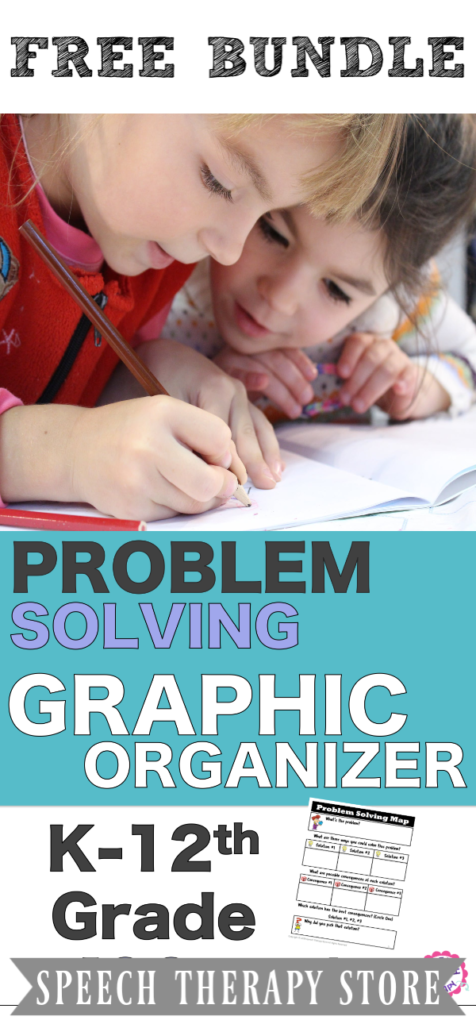
Start with Small Problems
Many of the “problems” children encounter are often small problems which the child may be over-reacting to, such as wanting a different coloring crayon or wanting to be first in line, however, these small problems are still very real to the child.
Practicing problem-solving with these small problems can be a great learning opportunity. Children can practice problem-solving with a small problem which can help them learn how to handle bigger problems in the future.
Problem Solving Importance
Social problem-solving skills are critical to a child’s social interactions, personal and professional relationships. A child’s ability to handle change, cope with stress, and handle challenges improves with a child’s ability to successfully solve social problems.
The ultimate goal is that the child will be able to solve social problems all on their own, but until they can independently solve a problem they will need to learn how to communicate and self-advocate to positively solve their problems.
Steps to Problem Solving
Children can be taught how to problem solve through a guided process of breaking down the problem and using simple steps to solve the problem.
Learning specific steps to problem-solving can allow children to remember how to solve a problem when they become overwhelmed or stressed.
Although learning to solve a problem independently can take some time and practice it is well worth the investment to have a child who can eventually solve most social situations in a positive manner on their own.
What we learnt about solving problems is don't freak out, if one thing doesn't work , try something else out. And work together as a team. #melthammathsweek #MELTHAMPUPILVOICE @problemsolveit pic.twitter.com/iVm1Im4Aue — yr6melthamce (@yr6melthamce) February 4, 2019
Problem Solving Form
Teach your students the 4 steps to becoming a social problem-solver.
- Identify the problem. For instance, start by having your student identify the social problem.
- Create three solutions. Also, have your student come up with three different solutions that they could use to solve the problem that they identified.
- Identify the consequences. Then, identify the consequence for each individual solution.
- Pick the best solution. Lastly, have your student identify which of their three solutions is the best choice Then have your student put into words why they think that solution is the best solution.
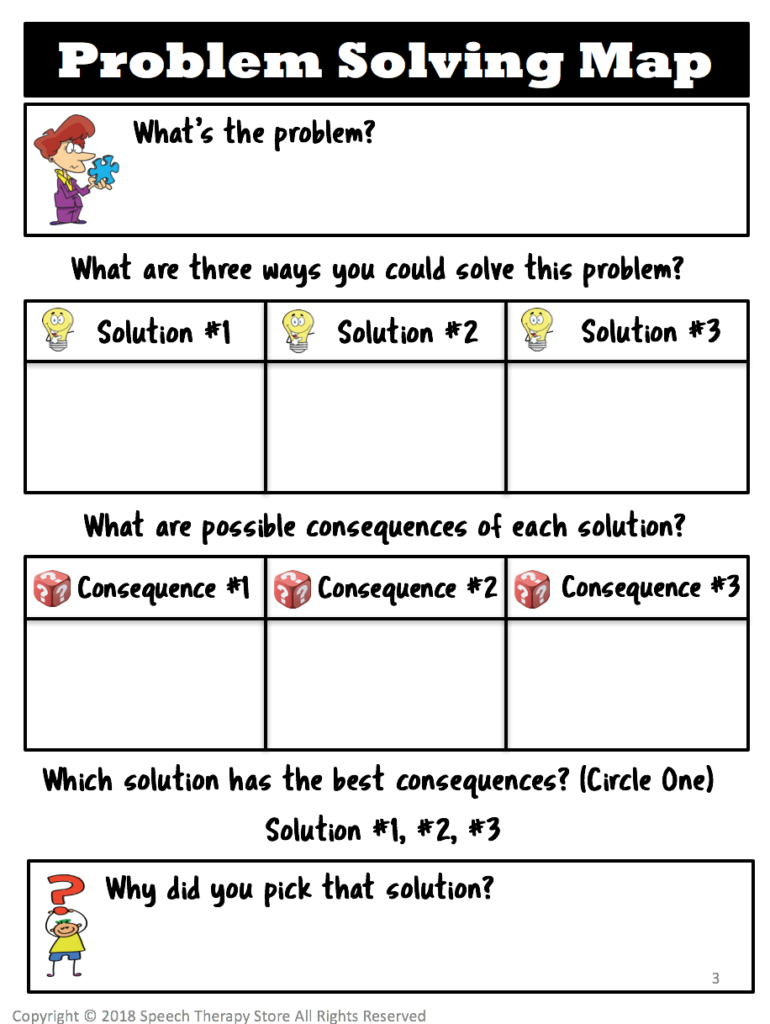
Problem Solving Review Form
After your students go through the social problem-solver have them use the social problem-solving review form.
- What happened. For instance, after your student tried their solution have them explain what happened next.
- Review the results. Also, have your student identify whether or not their solution got them the results they wanted.
- Use this solution again. Furthermore, have your student identify whether or not they would use this solution again in the future to solve the same or similar problem.
- What would you do differently? Finally, have your student explain what they would do differently if they didn’t get the results they wanted or if they wouldn’t use that solution again in the future.

71+ Social Problem Scenarios + 6 Blank Scenarios
Use the 71 social problem-solving scenarios to have your students get great experience practicing how to solve a social problem.
Also, included are 6 blank scenarios. Then laminate them so you can use them over and over again. Therefore, create social problems that the student experiences and needs help solving.
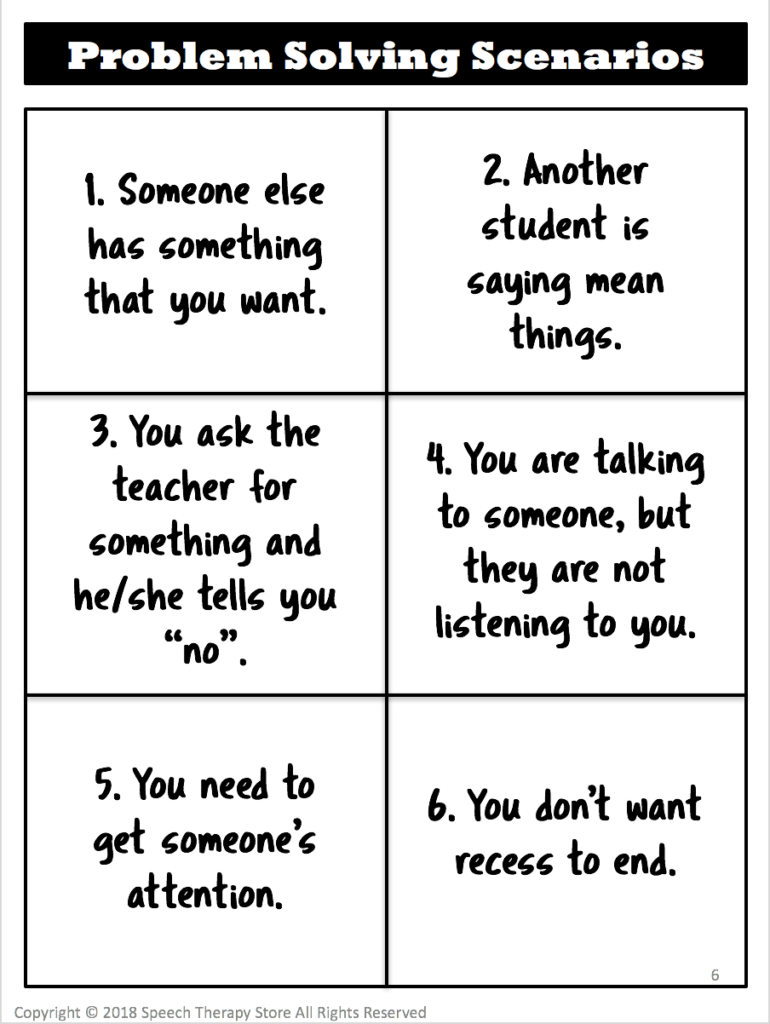
Wordless Video teaching Problem Solving
Watch this super cute wordless animation with your students and have them discuss the problem they see and how to best solve the problem.
Use this as a fun practice example to get your students started towards learning how to problem-solve.
Demonstrate Through Modeling
Model and discuss empathy.
First and foremost, children need to understand how another person might be feeling in a given situation in order to become a good social problem solver. The student needs to learn how to “stand in someone else’s shoes” for a little bit.
One way you can work on this skill is during the reading time you can focus on how a particular character in the story might be feeling.
Ask questions, such as:
- “How do they feel right now?”
- “How would you feel in that same situation?”
- “Why do you think they feel that way?”
Model Problem-Solving Skills as the Teacher
When you are faced with a problem you can solve the problem by thinking aloud for the students to hear how you solve a problem.
You can state the problem, then come up with possible solutions, then identify the possible consequences to each solution, then pick and explain why a solution is the best option.
For example, you could say, “I was hoping to take the class outside for a stress walk around the track before the reading test, but the problem is that it is raining outside. I could still take you outside, but then you will get wet, or we could walk the halls, but then we’d have to be really quiet because there are other classes learning, or we could just skip the walk and take the reading test, but then you might not do as well on the test. I think based on all of those solutions the best solution will be to walk the hallway, but you guys will have to promise to be quiet so that we don’t disrupt other classes.
Modeling the problem-solving process can be very helpful for the students to watch, observe, and later implement themselves.
Teach Communication
Have students communicate how they are feeling.
Teaching your students to share their emotions in a respectful way can improve their ability to problem-solve.
Have students use an “I” sentence frame, such as, “I feel _____ (insert feeling word) when _____ (identify what made you feel that way).”
For example, “I felt sad when Jackson broke my favorite pencil” or “I was mad when I wasn’t picked to be first in line.”
This way students can communicate how they are feeling using honest and open communication. Teaching students to appropriately communicate their emotions can help solve some social problems from the beginning.
Encourage Independency
Encourage your student to problem solve.
If your student is struggling to problem solve independently encourage them to do so using open-ended questions.
- “How could you fix this problem?”
- “What would be a fair solution?”
- “What would happen if you used that solution?”
Let the Student try to Problem Solve Independently
Give your students the space to try and solve their own problems using the guided strategies. Try not to come running to their rescue for every little problem.
Some problems are small and a great opportunity for the student to learn and practice. If an adult does all of the problem solving for a student then what are they really learning?
Give your students the time and space they need to practice solving small problems on their own. Of course, if it is a bigger or more serious problem then have an adult help guide the problem-solving process.
Tell an Adult
Remind your students that there are still some problems that are too big for them to solve on their own and that it is okay to get help from an adult to solve big problems.
For example, if the student doesn’t feel safe, someone is being hurt physically or emotionally, or if they tried to solve a problem independently but it didn’t work and they need help. Let them know that it’s okay to tell an adult.
Teach How to Disagree and How to Make Up
Discuss how to disagree respectfully.
Remind your student that they won’t always agree with their teacher, friends, classmate, or parents and that’s okay. Even the people we like might have different opinions, interests, and likes than we do.
However, even if we disagree with someone we should still treat them with respect. Treating someone with respect means to not call them names, ignore them, yell or hit them. It means that you do try to create solutions that both parties can agree with and to apologize when we hurt others’ feelings.
Role-Play How to Make Up
Practice in everyday life how to make up after a social problem .
Students are really having to stretch their brains today. It's @NSPCC #NumberDay and @problemsolveit are challenging Y9 and 10 to solve the escape room boxes. It's not as easy as it looks! The promise of a few sweet treats for the winners seems to be helping though! pic.twitter.com/AxRRJnJIv2 — CongletonHS (@CongletonHS) February 2, 2018
Be sure to get your free social problem solver today below! I hope you and your students love this freebie.
Have your students use task card scenarios to help them identify how they and others might feel in different social scenarios. Be sure to discuss the problem, identify possible solutions, identify the consequences of those possible solutions, and then based on those consequences pick the best solution.
Make social problem-solving a game by telling the students that they are social detectives and that it is their job to use what they know about social rules to help them identify the possible and best solutions.
Start practicing today with 71+ free social problem social task cards! Do your students need more practice?
Be sure to check out my other freebie for 31 wordless animated videos to teach problem-solving and so much more.
Make Problem Solving Easier with this Freebie!
Download yours today to get started.
Get More Problem Solving Time Saving Materials
Next, be sure to check out the following time-saving materials to continue to teach your students how to solve their social problems in addition to this freebie.
Weekly Social Pragmatics Homework
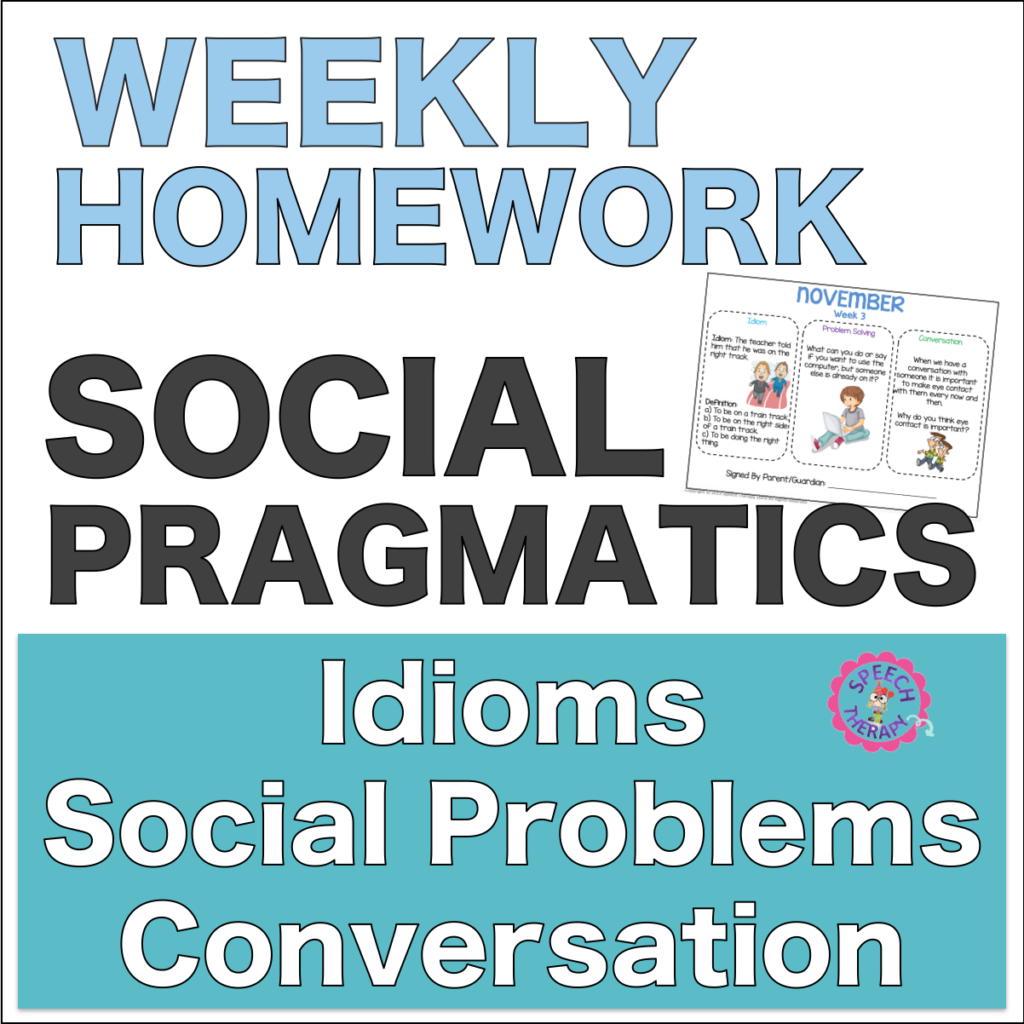
- Weekly problem-solving. Send home a weekly homework page that includes a problem-solving scenario plus an idiom and a conversational practice scenario.
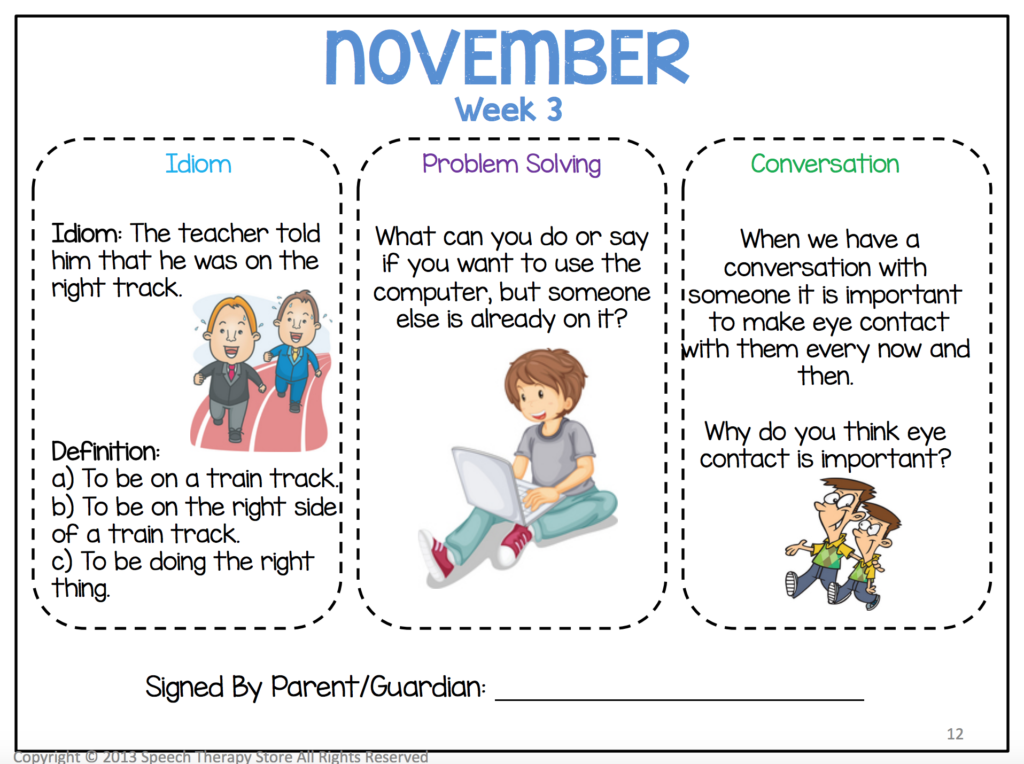
Restorative Justice Problem Solving Flip Book
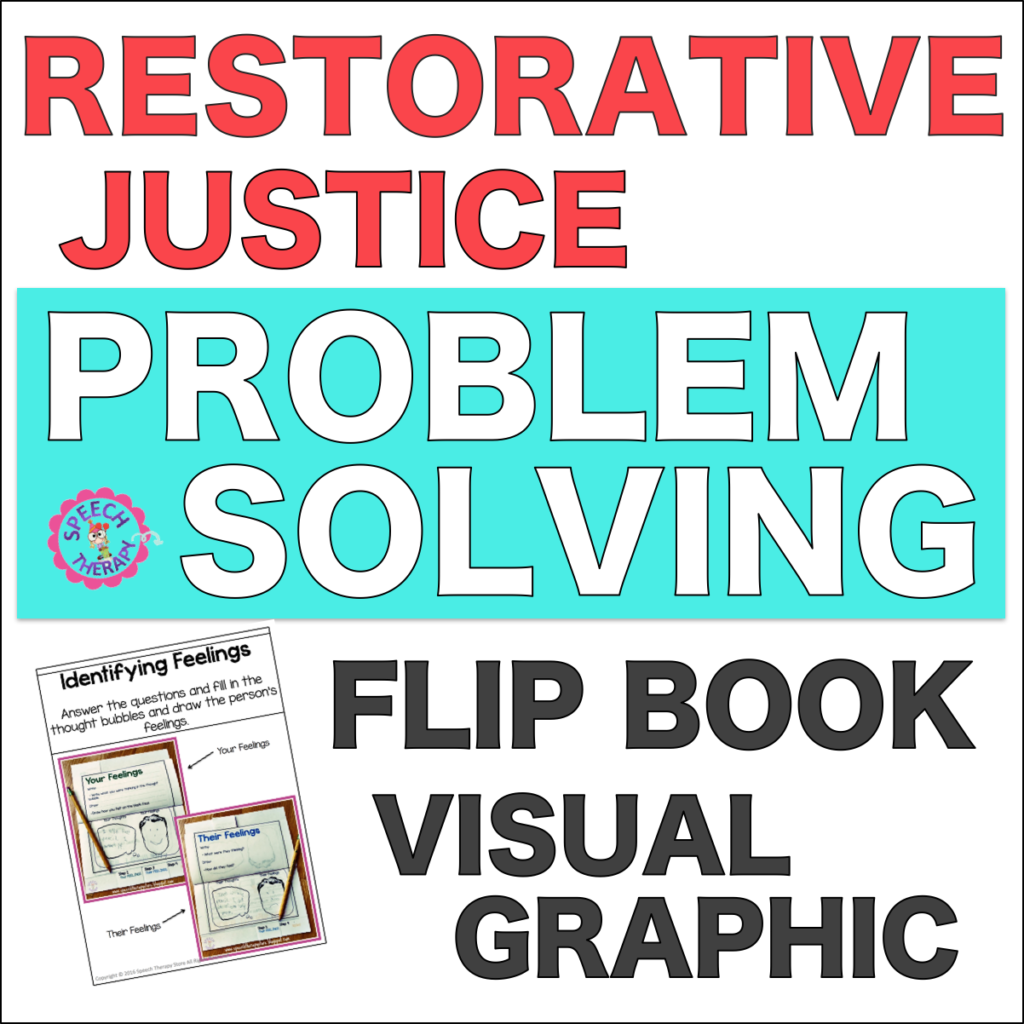
- Restorative justice graphic visual. Use this graphic visual to help your student restore a social relationship after a social problem.
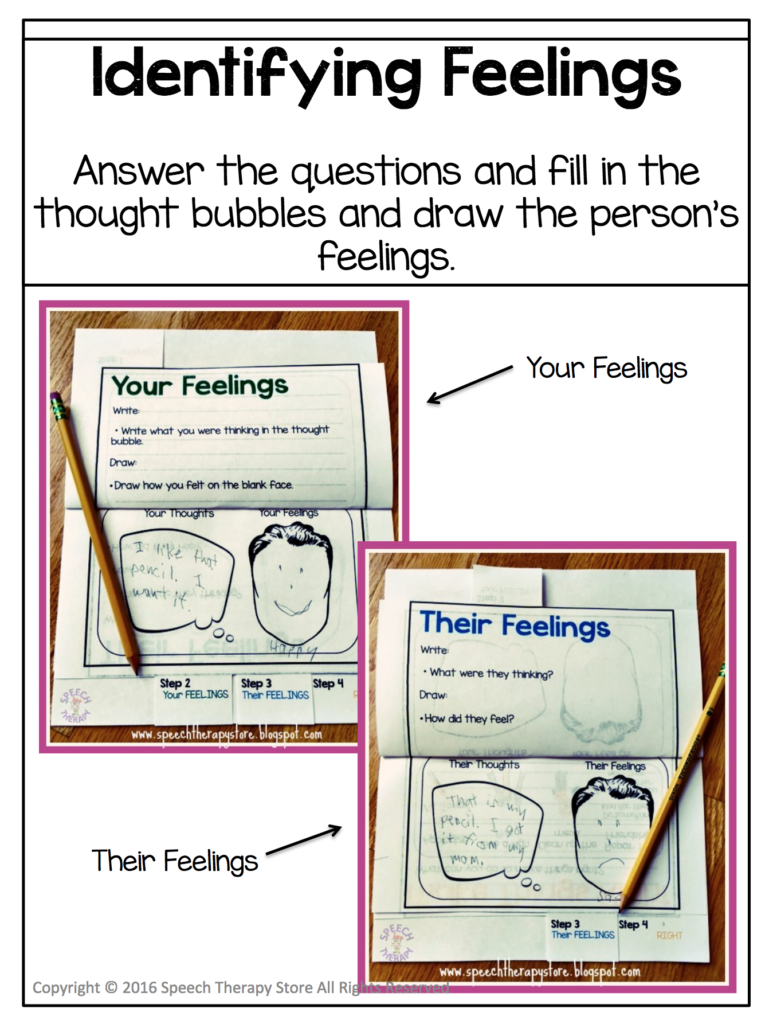
Self-Advocating Role-Play Scenarios
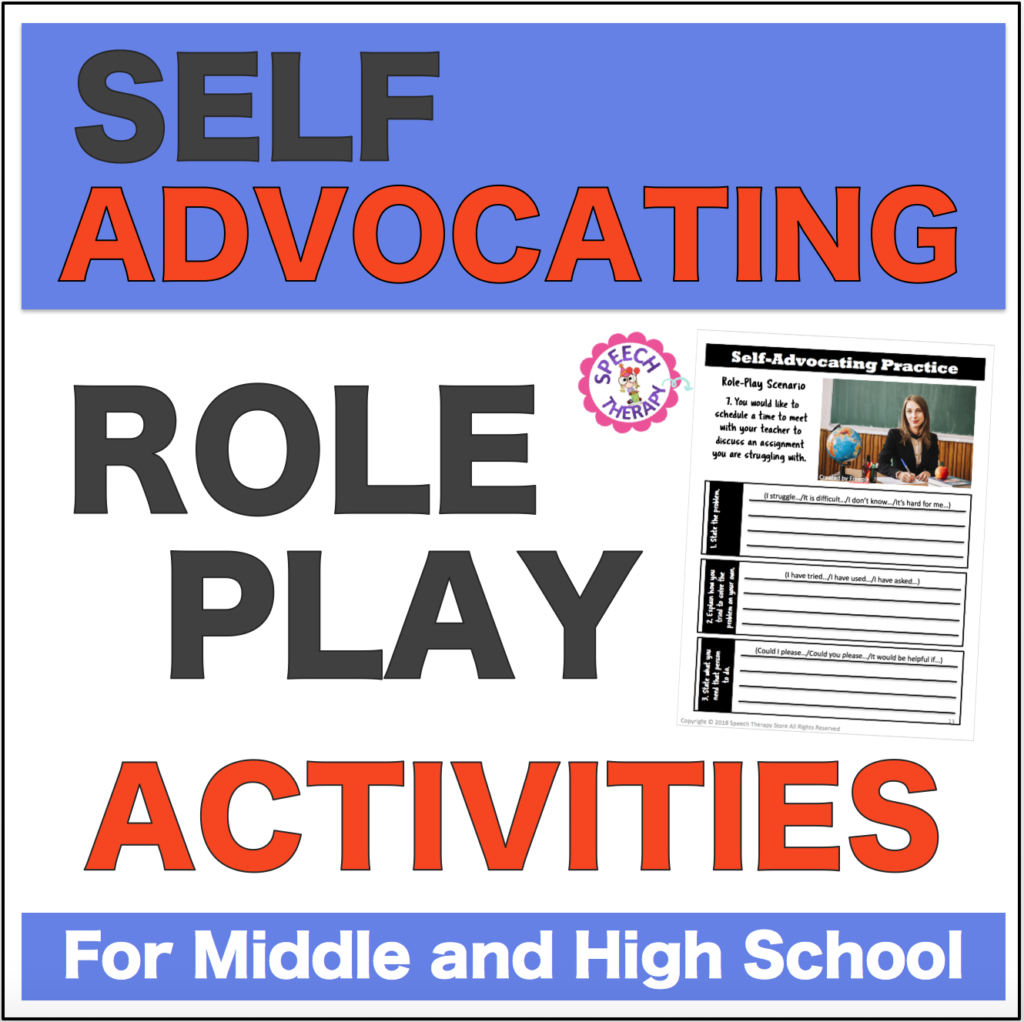
- Self-advocating in high school. Teach your high schoolers the process to self-advocate for what they need.
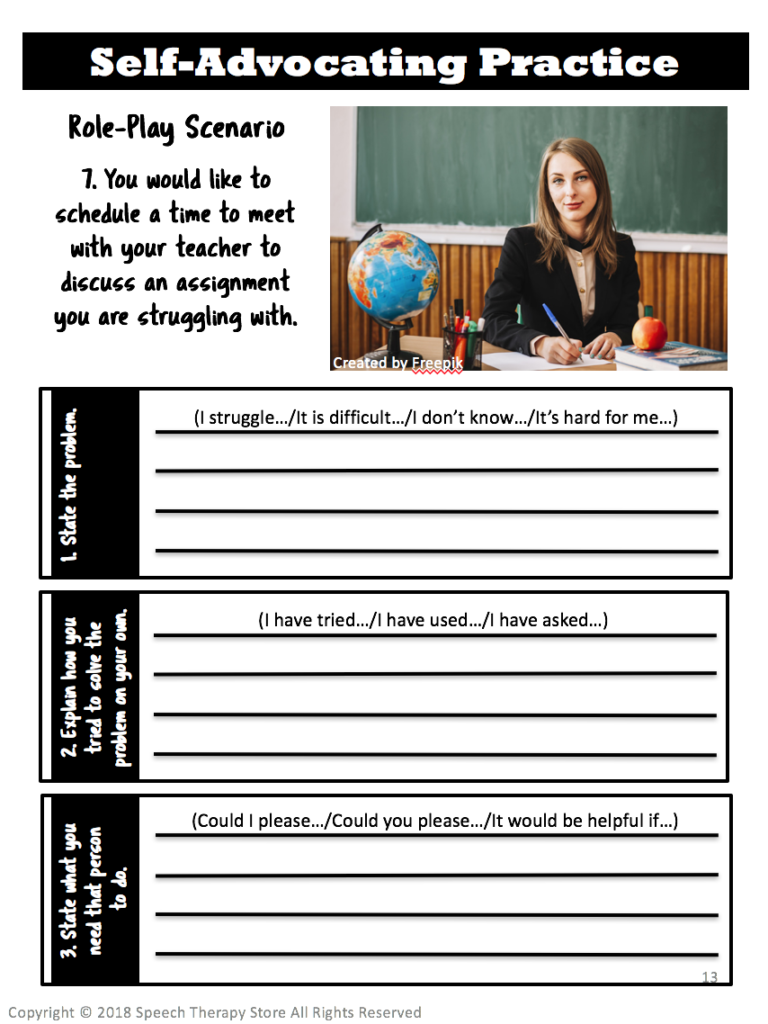
5th-12th Grade Life Skills Problem Solving
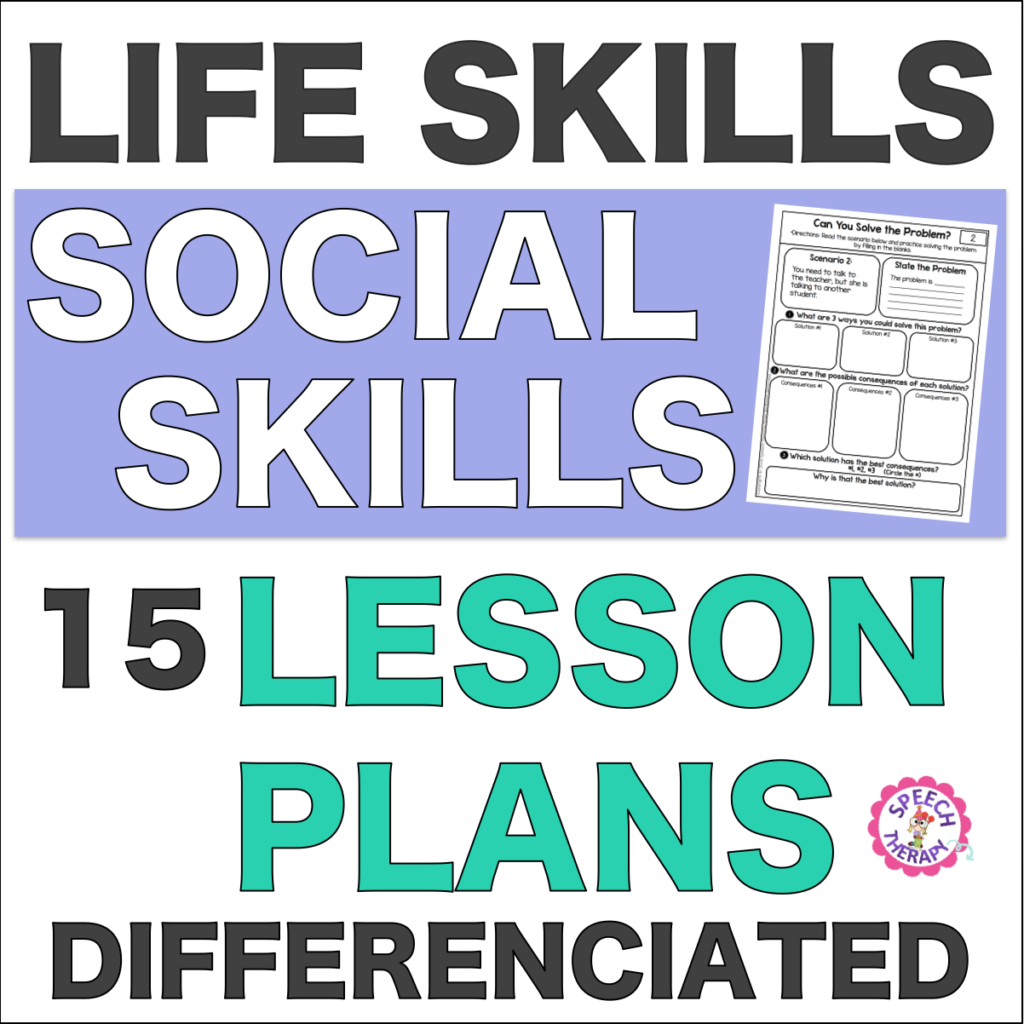
- Life skills problem-solving. In addition, this life skills differentiated bundle includes a problem-solving lesson plan.
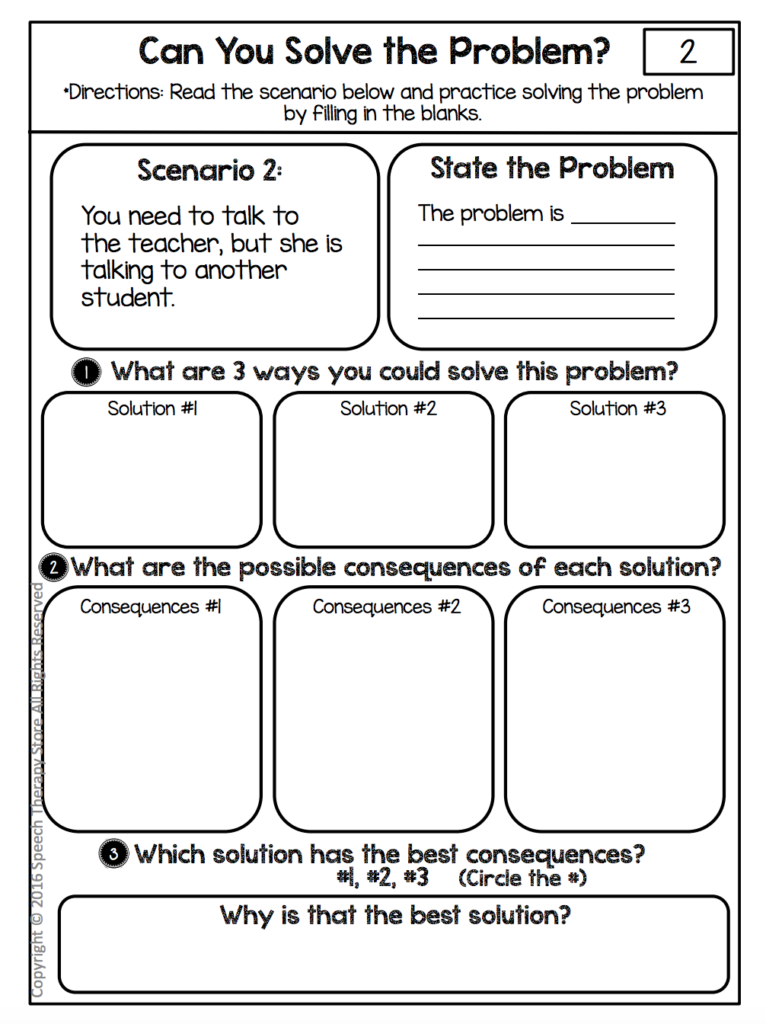
I recommend you read Problem Solving Wheel: Help Kids Solve Their Own Problems , 61+ Free Fillable SLP Planner Pages 2020-2021 , 430+ Free Multisyllabic Words List Activity Bundle , or 432+ Free IEP Goal Bank to Save You Time posts because they include freebies as well and who doesn’t want more freebies!
Got questions? Leave a comment. Let’s chat!
Monday 30th of January 2023
Hello! I have entered my name and email twice (yesterday & today) to receive to 71+ Free Social Problem-Solving Senarios, but I have not received anything yet. Not even an email back to mine in order to subcribe. Thanks for your help! Tracy
Melissa Berg
Tuesday 31st of January 2023
Hi Tracy, Thanks so much for reaching out! Sorry about that. We went ahead and sent you an email with the PDF attached. Wishing you all my best, Melissa
Problem Solving Skills
Tuesday 30th of August 2022
I truly love your site. Excellent colors, theme and writing. Thanks for sharing.
Laura Ricca
Monday 11th of April 2022
Tuesday 12th of April 2022
Hi Laura, I'm glad you found this resource helpful. Melissa
Modified Mental Health and Suicide Prevention - Speech Therapy Store
Monday 11th of May 2020
[…] 71+ FREE SOCIAL PROBLEM-SOLVING SCENARIOS […]
Problem Solving Wheel: Help Kids Solve Their Own Problems - Speech Therapy Store
Monday 4th of May 2020
[…] 71+ Free Social Problem Solving Task Cards Scenarios […]
Educationise
Engaging Problem Solving Activities That Spark Student Interest
In this article, we’ll explore a range of engaging problem solving activities crafted to captivate students’ interest and promote active learning across various subjects. From STEM design challenges to literature-based dilemmas, these hands-on activities are meticulously tailored to inspire curiosity, collaboration, and critical thinking in the classroom .
What are Problem Solving Skills?
Problem-solving skills refer to the ability to identify challenges, analyze potential solutions, and implement strategies to resolve issues effectively. These skills involve a combination of cognitive processes, such as critical thinking, creativity, and logical reasoning, that help individuals tackle complex problems in a systematic way.
Developing problem solving skills is essential not only in academic settings but also in everyday life and the workplace. They enhance decision-making, promote adaptability, and encourage the capacity to approach obstacles from multiple perspectives, enabling individuals to arrive at the most effective solutions.
Problem Solving Skills Examples
When exploring examples of problem solving skills, it’s important to understand how various abilities contribute to effective resolution of issues. These problem solving skills examples encompass a range of techniques and strategies that enable individuals to tackle challenges efficiently. Let’s explore these examples one by one:
- Analytical Thinking : The ability to break down complex problems into smaller, manageable components, making it easier to understand and solve the issue systematically.
- Creativity : Using innovative thinking to generate unique solutions to problems, often by approaching challenges from a new or unconventional perspective.
- Critical Thinking : Assessing situations logically, evaluating evidence, and making informed decisions by considering all aspects of the problem before acting. This is a common example of problem solving skills. This is a classic example of problem solving skills, demonstrating how the ability to analyze, evaluate, and address challenges can lead to effective solutions.
- Decision-Making : The ability to weigh different options, assess their potential outcomes, and choose the best course of action to resolve an issue effectively. It exemplifies the essential skills of solving problems, including the ability to weigh different options, assess their potential outcomes, and choose the best course of action to achieve a successful resolution.
- Communication : Sharing ideas clearly and effectively with others, listening to different viewpoints, and collaborating to reach a solution collectively.
- Adaptability : Being flexible in adjusting to new information or changes in circumstances, allowing one to modify their approach when the original plan is no longer effective.
- Research : Gathering relevant information and resources to better understand the problem and find informed solutions based on facts and evidence.
- Collaboration : Working together with others, leveraging diverse skills and knowledge, to solve a problem more efficiently than working alone.
- Time Management : Prioritizing tasks and managing time efficiently to ensure problems are solved within deadlines or before they escalate.
From problem-solving skills examples such as analytical thinking and creativity, which help break down and innovate solutions, to critical thinking and decision-making, which guide the evaluation of options and implementation of the best strategies, each skill plays a pivotal role.
Additionally, skills like communication, adaptability, research, collaboration, and time management are crucial for addressing problems in a comprehensive manner. Understanding and developing these skills can greatly enhance one’s ability to navigate complex issues and achieve successful outcomes.

Problem Solving Activities for Students
In today’s educational landscape, fostering critical thinking and problem solving skills is paramount. As educators, we aim to cultivate a generation of students who excel not only academically but also in navigating real-world challenges with creativity and confidence. Here is the list of problem-solving activities that can help enhance these essential skills.
1. Escape Room Challenge: The Lost Treasure
“Escape Room Challenge: The Lost Treasure” offers compelling problem solving activities for students, immersing them in a thrilling adventure that enhances their critical thinking and teamwork skills as they work to solve puzzles and uncover hidden clues. This interactive experience also serves as one of the best team building problem solving activities, fostering collaboration and communication among participants.
Follow the steps below to implement this activity in the class:
- Introduce the escape room challenge and set the scene with a captivating treasure hunt theme.
- Transform the classroom into an immersive escape room environment with hidden clues and puzzles.
- Divide students into teams and provide instructions for the challenge, emphasizing teamwork and problem solving skills.
- Allow teams to explore the room and uncover hidden clues and puzzles.
- Encourage observation and collaboration as teams work together to solve challenges.
- Present teams with a variety of puzzles and obstacles to overcome.
- Challenge them to solve each puzzle to progress through the adventure.
- Set a time limit for the challenge to create urgency and excitement.
- Encourage teams to work efficiently to unlock the secrets of the treasure before time runs out.
- Foster effective communication and teamwork among team members.
- Emphasize the importance of listening and leveraging each other’s strengths.
- Throughout the challenge, students will develop critical thinking, communication, and problem solving skills.
- Encourage reflection on their strategies and teamwork dynamics.
- Celebrate each team’s success upon completing the challenge.
- Facilitate a debrief session for students to share insights and reflect on their experiences.
With this guide, you can create an engaging escape room challenge that promotes teamwork, critical thinking, and problem solving skills in a fun and immersive learning environment. Incorporating problem solving activities for kids like this one will not only keep them entertained but also sharpen their cognitive abilities as they tackle exciting challenges.
2. STEM Design Challenge: Build a Bridge
“STEM Design Challenge: Build a Bridge” is one of the most engaging problem solving activities for middle school students, offering a fun problem solving experience that enhances their engineering skills and encourages teamwork and innovation
Here is the step by step breakdown of this activity:
- Present the STEM design challenge to students, explaining that they will be tasked with building a bridge using simple materials.
- Supply students with materials such as popsicle sticks, straws, tape, string, and basic construction tools.
- Encourage students to inspect the materials and plan their bridge designs accordingly.
- Prompt students to brainstorm ideas and sketch their bridge designs before starting construction.
- Encourage them to consider factors like structural stability, weight distribution, and material durability.
- Instruct students to begin building their bridges based on their designs.
- Remind them to apply principles of engineering and physics as they construct their bridges.
- As students build their bridges, they’ll encounter challenges and obstacles.
- Encourage them to apply problem solving strategies and make adjustments to their designs as needed.
- Throughout the construction process, facilitate discussions among students.
- Encourage them to reflect on their design choices and problem solving approaches.
- Provide opportunities for students to test their bridges using various weight loads or simulated environmental conditions.
- Encourage them to observe how their bridges perform and make further adjustments if necessary.
8. Bridge-Building Showcase:
- Conclude the challenge with a bridge-building showcase where students present their creations to their peers.
- Encourage students to discuss their design process, challenges faced, and lessons learned.
9. Celebrate Achievements:
- Celebrate students’ achievements and highlight the importance of their creativity and engineering prowess.
- Encourage a spirit of inquiry and innovation as students showcase their bridge designs.
10. Reflect and Conclude:
- Conclude the STEM design challenge with a reflection session.
- Prompt students to reflect on their experiences and discuss the skills they’ve developed throughout the challenge.
By following these step-by-step instructions, students will engage in a hands-on STEM design challenge that fosters critical thinking, creativity, collaboration , and resilience while deepening their understanding of engineering and physics principles.
3. Mystery Box Inquiry: What’s Inside?
It is one of the ideal problem solving group activities that offers creative ways to improve problem solving skills in students, encouraging teamwork and critical thinking as they work together to uncover the secrets hidden within the box.
Incorporating problem solving team-building activities like this fosters collaboration and enhances communication, essential skills for both academic and personal growth. These engaging team problem solving activities challenge participants to think critically and combine their strengths to achieve a common goal.
Follow these steps to carry out this activity in the class:
- Introduction and Setup: Introduce the Mystery Box Inquiry activity and set up a closed mystery box in the classroom.
- Group Formation and Instructions: Divide students into small groups and provide instructions emphasizing teamwork and critical thinking.
- Engage the Senses: Encourage students to gather around the mystery box and use their senses (touch, smell, hearing) to gather clues about its contents.
- Making Observations: Instruct students to carefully observe the exterior of the mystery box and record their observations.
- Formulating Hypotheses: Prompt students to formulate hypotheses about what might be inside the mystery box based on their observations.
- Testing Hypotheses: Invite students to test their hypotheses by proposing various scenarios and explanations.
- Refining Problem Solving Strategies: Encourage students to refine their problem solving strategies based on new information and insights.
- Group Discussion and Conclusion: Gather the groups for a discussion, allowing students to share their observations, hypotheses, and insights. Conclude by revealing the contents of the mystery box and discussing the problem solving process.
- Reflection and Extension: Provide students with an opportunity to reflect on their experience and optionally extend the activity by challenging them to design their own mystery box inquiries.
By following these steps, you can facilitate an engaging Mystery Box Inquiry activity that prompts students to make astute observations, test hypotheses, and refine their problem solving strategies effectively. Through teamwork and problem solving activities, students learn to communicate ideas, share diverse perspectives, and develop strategies that lead to creative and successful solutions.
Incorporating hands on problem-solving activities like this not only enhances critical thinking but also strengthens teamwork, as students collaborate and combine their efforts to solve challenges together.
4. Real-World Problem Simulation: Environmental Crisis
Real-World Problem Simulation: Environmental Crisis” is one of the most engaging problem solving activities for high school students, designed as a group problem solving challenge that immerses students in the complexities of environmental issues, encouraging collaboration and critical thinking to find innovative solutions.
- Introduce the environmental crisis scenario.
- Explain its significance and real-world implications.
- Divide students into teams with varied skill sets.
- Assign roles like researcher, negotiator, presenter.
- Task teams with researching causes, impacts, and solutions.
- Provide access to relevant resources.
- Encourage teams to negotiate with stakeholders.
- Prompt the development of comprehensive strategies.
- Organize a debate or town hall-style discussion.
- Facilitate analysis of proposed solutions.
- Allow teams to implement proposed solutions.
- Monitor progress and outcomes.
- Conclude with a group reflection session.
- Discuss lessons learned and the importance of problem solving skills.
This is one of the problem solving activities for students that can create a simulated environmental crisis scenario, fostering collaboration, critical thinking, and problem solving skills in students.
5. Mathematical Escape Puzzle: Crack the Code
Mathematical Escape Puzzle: Crack the Code” is one of the most intriguing problem solving activities in the classroom, offering an exciting blend of problem solving games for students and challenging puzzles that test their mathematical skills and teamwork. This activity presents a unique problem solving challenge for students, motivating them to collaborate and think critically to solve complex equations and unlock the code.
- Introduce the escape puzzle, explaining the goal of unlocking a hidden code through math equations and logic puzzles.
- Set up materials in the classroom.
- Explain students’ task: solving math equations and logic puzzles to unlock the code.
- Provide puzzle materials to teams or individuals.
- Instruct on effective use.
- Prompt students to solve provided math equations and logic puzzles.
- Encourage collaboration and problem solving among students.
- Offer guidance as needed.
- Monitor student progress and provide assistance when required.
- Celebrate successful completion of puzzles.
- Guide students through unlocking the hidden code.
- Conclude with a reflective discussion on math concepts and problem solving skills applied.
By following these steps, you can engage students in a challenging Mathematical Escape Puzzle that reinforces math skills and promotes problem solving abilities.
6. Literature-Based Problem Solving Activity: Character Dilemmas
Literature-Based Problem Solving Activity: Character Dilemmas” is an engaging problem solving activity for students that enhances problem solving skills in students by challenging them to analyze and resolve complex character dilemmas in literature. This activity not only deepens their understanding of the narrative but also sharpens their ability to think critically and collaboratively.
- Choose literature pieces with rich character development and moral dilemmas that are suitable for your students’ age and maturity level.
- Present the Literature-Based Problem Solving activity to students, explaining that they will engage in thought-provoking analysis and ethical reflection inspired by characters in literature.
- Assign readings or excerpts from the selected literature to students.
- Instruct students to analyze the characters’ motivations, actions, and the ethical dilemmas they face.
- Encourage students to prepare for discussions by taking notes on key points, character motivations, and possible solutions to the dilemmas.
- Host lively discussions where students explore the moral dilemmas presented in the literature.
- Encourage students to express their thoughts, opinions, and interpretations while respecting diverse perspectives.
- Organize persuasive debates where students defend their viewpoints and propose solutions to the character dilemmas.
- Encourage students to use evidence from the literature to support their arguments.
- Prompt students to apply problem solving skills to analyze the consequences of different decisions and actions within the literature.
- Encourage critical thinking as students navigate complex ethical situations.
- Guide students in applying the lessons learned from literature to real-world scenarios.
- Encourage reflection on how the problem solving skills and ethical considerations explored in the activity can be applied in their own lives.
- Conclude the Literature-Based Problem Solving activity by summarizing key insights and takeaways from the discussions and debates.
- Encourage students to reflect on how their understanding of moral dilemmas and problem solving skills has evolved through the activity.
It is one of the problem solving activities through which students will engage in thought-provoking analysis, ethical reflection, and problem solving inspired by characters in literature, fostering critical thinking and ethical decision-making skills in a meaningful and engaging way.
Engaging problem solving activities for students are the cornerstone of active learning, fostering essential skills for success in today’s dynamic world. By seamlessly integrating these hands-on experiences into the classroom, educators inspire curiosity, collaboration, and critical thinking in their students.
Whether through STEM design challenges, literature-based dilemmas, or coding adventures, these problem solving exercises empower students to become adept problem solvers, equipped to navigate the challenges of tomorrow with confidence and ingenuity. Embrace the transformative potential of engaging problem solving activities to unleash the full spectrum of educational possibilities and prepare students for a future brimming with possibilities.
Share this:
Discover more from educationise.
Subscribe to get the latest posts sent to your email.
Type your email…
6 thoughts on “ Engaging Problem Solving Activities That Spark Student Interest ”
- Pingback: 11 Activities That Promote Critical Thinking In The Class - Educationise
- Pingback: 10 Teaching Strategies to Spark Creativity in Students - Educationise
- Pingback: Gamification in Education: Tips and Tricks for Gamified Learning - Educationise
- Pingback: Neuroscience of Learning: 10 Principles for the Classroom - Educationise
- Pingback: 10 Unique Educational Experiences Every Student Should Try - Educationise
- Pingback: DIY Education: 8 YouTube Channels Revolutionizing Learning - Educationise
Leave a Reply Cancel reply
Subscribe now to keep reading and get access to the full archive.
Continue reading

Engaging Problem-Solving Activities For High School Students
In today’s rapidly evolving world, problem-solving skills are essential for success in both academic and professional realms. High school students, in particular, can greatly benefit from engaging in activities that challenge their critical thinking abilities and foster their capacity to tackle complex issues.
If you’re short on time, here’s a quick answer to your question: Some effective problem-solving activities for high school students include case studies, simulations, design challenges, coding projects, and collaborative group tasks that require analytical thinking, creativity, and teamwork.
In this comprehensive article, we will explore a wide range of problem-solving activities tailored specifically for high school students. From hands-on projects to thought-provoking scenarios, these activities aim to develop essential skills such as logical reasoning, decision-making, and innovative thinking.
By incorporating these activities into the classroom or extracurricular programs, educators can equip students with the tools they need to navigate complex challenges and thrive in an ever-changing world.
Case Studies and Simulations
One of the most effective ways to engage high school students in problem-solving activities is through the use of case studies and simulations. These immersive learning experiences allow students to apply their knowledge and skills to real-world scenarios, fostering critical thinking and decision-making abilities that are essential for success in the 21st century.
Real-world Scenarios
Real-world scenarios provide students with the opportunity to tackle challenges that mirror those encountered in various industries and professions. For example, students might be tasked with developing a marketing strategy for a local business or designing an urban planning project that addresses sustainability concerns.
By grappling with authentic problems, students develop an appreciation for the complexities involved and gain valuable experience in problem-solving. According to a study by the Association of American Colleges and Universities , 92% of employers value the ability to apply knowledge and skills to real-world settings, making these activities invaluable for students’ future success.
Ethical Dilemmas
Ethical dilemmas challenge students to navigate complex moral and ethical considerations, fostering their ability to think critically and make principled decisions. These scenarios often involve conflicting values, stakeholder interests, and competing priorities, mirroring the kinds of challenges professionals face in various fields.
For instance, students might explore a case study on the ethical implications of genetic engineering or debate the appropriate response to a data breach within a company. By engaging with these dilemmas, students develop a deeper understanding of ethical frameworks and learn to analyze situations from multiple perspectives.
According to a survey by the Ethics & Compliance Initiative , 👍 companies with strong ethical cultures outperform those without, underscoring the importance of ethical decision-making skills.
Business Simulations
Business simulations provide students with the opportunity to experience the complexities of running a business in a safe, controlled environment. These simulations often involve managing various aspects of a company, such as finance, operations, marketing, and human resources.
Students must make strategic decisions, analyze data, and respond to changing market conditions, all while considering the interdependencies between different business functions. By participating in these simulations, students develop critical problem-solving skills, such as risk assessment, resource allocation, and decision-making under uncertainty.
According to a report by Gartner , 70% of organizations plan to use simulations for employee training by 2025, highlighting the growing recognition of their effectiveness in developing practical skills.
Historical Case Studies
Historical case studies offer a unique opportunity for students to analyze and learn from past events, decisions, and their consequences. By examining significant historical moments, students can develop a deeper understanding of the complexities involved and the various factors that influenced the outcomes.
For example, students might explore the decision-making process behind the Marshall Plan or analyze the strategies employed during the Civil Rights Movement. These case studies not only foster critical thinking and problem-solving skills but also provide valuable insights into the social, political, and economic contexts that shape decision-making.
According to the American Historical Association , studying history cultivates essential skills such as analysis, interpretation, and communication, which are highly valued in various professional fields.
By incorporating case studies and simulations into the curriculum, educators can create engaging and immersive learning experiences that challenge students to think critically, solve problems, and develop essential skills for success in the 21st century.
😊 These activities not only enhance students’ academic performance but also prepare them for the complexities and challenges they will face in their future careers and personal lives.
Design Challenges and Engineering Projects
Engaging high school students in hands-on problem-solving activities is a surefire way to ignite their curiosity and foster critical thinking skills. Design challenges and engineering projects offer an immersive learning experience that transcends traditional classroom lectures.
By tackling real-world problems, students develop a deeper understanding of STEM concepts while honing their creativity and teamwork abilities. Let’s delve into some captivating design challenges and engineering projects that are sure to captivate and inspire young minds.
Robotics and Automation
Robotics and automation projects have become increasingly popular in high schools, allowing students to explore the cutting-edge world of technology. From designing and programming robotic arms for assembly line simulations to creating autonomous vehicles or drones, these projects challenge students to apply principles of mechanics, electronics, and computer programming.
Organizations like FIRST Robotics provide excellent resources and competitions for students to showcase their robotic creations. According to a recent study by the National Robotics Education Foundation, 88% of students involved in robotics programs reported improved problem-solving skills and increased engagement in STEM subjects.
Sustainable Design
In an era where environmental consciousness is paramount, sustainable design projects offer students the opportunity to tackle real-world challenges while promoting eco-friendly solutions. These projects may involve designing and building energy-efficient homes, creating innovative recycling systems, or developing sustainable transportation solutions.
By leveraging resources from organizations like the U.S. Green Building Council , students can learn about green building practices, energy-efficient technologies, and the importance of environmental stewardship.
A recent study by the National Center for Education Statistics revealed that high school students who participated in sustainable design projects demonstrated a 25% increase in their understanding of environmental issues and a stronger commitment to sustainable practices.
Architectural Design
Architectural design projects challenge students to think creatively about the built environment while considering factors such as aesthetics, functionality, and structural integrity. From designing eco-friendly residential homes to conceptualizing futuristic urban landscapes, these projects allow students to explore the principles of architecture, engineering, and design.
By utilizing tools like computer-aided design (CAD) software and 3D printing, students can bring their architectural visions to life. Architecture for Children is an excellent resource that provides educational materials and design challenges tailored specifically for high school students.
😊 According to a recent survey by the American Institute of Architects, 93% of architecture firms reported a need for skilled professionals with strong problem-solving and design thinking abilities – skills that can be cultivated through architectural design projects.
Product Development
Product development projects offer a unique opportunity for students to explore the entire lifecycle of a product, from ideation and design to prototyping and marketing. These projects challenge students to identify real-world problems, conduct market research, and develop innovative solutions that meet consumer needs.
By collaborating in teams, students can leverage their diverse strengths and perspectives, fostering teamwork and communication skills. Resources like InventionLand Education provide engaging curricula and competitions that encourage students to unleash their entrepreneurial spirit.
A recent study by the National Science Foundation found that high school students who participated in product development projects were 40% more likely to pursue careers in STEM fields, demonstrating the long-lasting impact of these engaging learning experiences.
By immersing high school students in these captivating design challenges and engineering projects, educators can ignite a passion for problem-solving, innovation, and lifelong learning. 👏 These hands-on experiences not only reinforce STEM concepts but also foster essential skills such as critical thinking, collaboration, and creativity – skills that will serve students well in their future academic and professional endeavors.
Coding and Programming Activities
In today’s digital age, coding and programming skills are becoming increasingly valuable for high school students. Not only do these skills foster problem-solving abilities and logical thinking, but they also open doors to exciting career paths in technology, data science, and more.
Let’s explore some engaging coding and programming activities that can captivate and challenge high school learners.
Web Development
Web development is a fantastic way to introduce students to the world of coding. By learning HTML, CSS, and JavaScript, they can create their own websites and web applications. This hands-on experience not only teaches them valuable coding skills but also encourages creativity and self-expression.
According to Codecademy , a popular online learning platform, over 50 million students have learned to code through their interactive courses, including web development. 😎
Game Design
What better way to engage students than through game design? By using programming languages like Python or C++, students can create their own video games, simulations, or interactive experiences. This activity not only teaches coding concepts but also fosters problem-solving, storytelling, and design thinking.
Game design platforms like Unity and Scratch offer user-friendly interfaces and extensive resources for beginners. Can you imagine the thrill of playing a game created by your own students? 🎮
Data Analysis and Visualization
In our data-driven world, data analysis and visualization skills are highly sought after. By introducing students to programming languages like Python or R, they can learn to analyze and visualize data sets, uncovering insights and patterns.
This activity not only teaches coding but also fosters critical thinking, statistical reasoning, and data literacy. According to a McKinsey report , the demand for data analysts and data scientists is projected to grow by 28% by 2026. 📊
Algorithmic Thinking
At the heart of programming lies algorithmic thinking – the ability to break down complex problems into smaller, manageable steps. By engaging students in activities that involve algorithm design and implementation, they develop critical thinking, logical reasoning, and problem-solving skills that are invaluable in any field.
Platforms like CodinGame and HackerRank offer fun and challenging coding exercises that hone algorithmic thinking abilities. Imagine the sense of accomplishment when a student solves a complex problem through their carefully crafted algorithm! 🏆
By incorporating these coding and programming activities into the curriculum, high school educators can not only equip students with valuable technical skills but also foster essential 21st-century competencies like critical thinking, creativity, and problem-solving.
So, let’s embrace the power of coding and unleash the potential of our future innovators! 💻👩💻👨💻
Collaborative Group Tasks
Collaborative group tasks are an excellent way to foster problem-solving skills, teamwork, and critical thinking among high school students. By working together, students can learn from each other’s perspectives, challenge their assumptions, and develop a deeper understanding of complex issues.
Here are some engaging collaborative group tasks that can enhance students’ problem-solving abilities:
Problem-solving Competitions
Participating in problem-solving competitions, such as the Math Olympiad or Google’s Coding Competitions , can be a thrilling experience for students interested in mathematics, computer science, or logic puzzles.
These competitions often involve solving intricate problems within a limited time frame, fostering critical thinking, time management, and collaboration skills. According to a study by EdWeek , over 70% of students who participated in math competitions reported increased confidence and problem-solving abilities.
Debate and Public Speaking
Engaging in debates and public speaking events can help students develop their communication skills, research abilities, and critical thinking. Preparing for these events often involves analyzing complex issues from multiple perspectives, synthesizing information, and crafting persuasive arguments.
Organizations like National Speech & Debate Association provide resources and opportunities for students to participate in various debate formats and public speaking events. According to a survey , 92% of former speech and debate participants reported that the activity helped them develop critical thinking skills. 😊
Model United Nations
Model United Nations (MUN) simulations provide students with an immersive experience in diplomacy, negotiation, and problem-solving on a global scale. Participants represent different countries and work together to address international issues, such as human rights, environmental concerns, and conflicts.
MUN events, organized by organizations like Best Delegate , challenge students to think critically, collaborate effectively, and develop public speaking skills. According to a study , 84% of MUN participants reported improved research and critical thinking abilities. 👏
Community Service Projects
Engaging in community service projects can be an excellent way for students to apply their problem-solving skills to real-world challenges. These projects often involve identifying and addressing local issues, such as poverty, environmental degradation, or access to education.
Students can work in teams to research the problem, develop solutions, and implement their plans. Organizations like DoSomething.org provide resources and opportunities for students to get involved in various community service initiatives.
According to a study , over 90% of students who participated in community service projects reported increased problem-solving and leadership skills. 🎉
Engaging in problem-solving activities is a crucial aspect of preparing high school students for the challenges they will face in their future academic and professional endeavors. By incorporating a diverse range of activities, such as case studies, simulations, design challenges, coding projects, and collaborative group tasks, educators can foster a learning environment that encourages critical thinking, creativity, and teamwork.
These activities not only equip students with essential problem-solving skills but also provide them with opportunities to explore their interests, develop their passions, and gain valuable experiences that can shape their future paths.
By embracing these engaging and practical learning experiences, high school students can develop the confidence and resilience necessary to navigate complex challenges and emerge as innovative problem-solvers, ready to make a positive impact in their communities and the world.
Similar Posts

Best Grad Schools For Math: A Comprehensive Guide
Pursuing a graduate degree in mathematics can open doors to a world of opportunities, from cutting-edge research…

Notable Alumni Of The Indian School Of Business (Isb)
The Indian School of Business (ISB) is a prestigious institution that has produced some of the most…

Easiest Architecture Schools To Get Into: A Comprehensive Guide
Pursuing a career in architecture is a dream for many, but the path to becoming an architect…

How To Get An Edu Email Address: A Comprehensive Guide
In today’s digital age, having an edu email address has become a coveted asset, especially for students…

High School Class Rank Calculator: A Comprehensive Guide
In the competitive world of academics, your high school class rank can be a make-or-break factor in…

How Long Does Penn Foster High School Take? A Comprehensive Guide
Pursuing an education is a significant investment of time and effort, and when it comes to online…
Sign up for a Pilot

Home » Blog » General » Practical Problem Solving Activities for High Schoolers

Practical Problem Solving Activities for High Schoolers
As high schoolers navigate the challenges of adolescence and prepare for the future, developing strong problem-solving skills is crucial. Problem-solving skills not only help students overcome obstacles and find solutions, but they also foster critical thinking, creativity, and resilience. In this blog post, we will explore practical problem-solving activities that can be incorporated into high school curriculum to support the development of these essential skills.
Understanding Problem Solving
Before we dive into the activities, let’s first understand what problem solving entails. Problem solving is the process of identifying, analyzing, and finding solutions to challenges or issues. It involves critical thinking, decision making, and creativity. By developing problem-solving skills, high schoolers can become more effective at overcoming obstacles and making informed decisions.
There are numerous benefits to developing problem-solving skills. Firstly, it enhances students’ ability to think critically and analytically. By engaging in problem-solving activities, high schoolers learn to evaluate information, consider different perspectives, and make logical connections. These skills are not only valuable in academic settings but also in real-life situations.
Furthermore, problem-solving skills promote creativity. When faced with a problem, students are encouraged to think outside the box and generate innovative solutions. This fosters their ability to approach challenges with an open mind and explore different possibilities.
However, high schoolers may face certain challenges when it comes to problem solving. They may struggle with identifying the root cause of a problem, analyzing information effectively, or generating creative solutions. Additionally, they may feel overwhelmed or lack confidence in their problem-solving abilities. By incorporating practical problem-solving activities into the curriculum, educators can provide students with the necessary tools and support to overcome these challenges.
Now, let’s explore five practical problem-solving activities that can be implemented in high school classrooms:
Activity 1: Brainstorming
Brainstorming is a popular problem-solving technique that encourages students to generate ideas and solutions in a group setting. It promotes collaboration, creativity, and open-mindedness. To conduct a successful brainstorming session, follow these steps:
- Clearly define the problem or challenge.
- Set a time limit for the brainstorming session.
- Encourage all participants to share their ideas without judgment.
- Record all ideas on a whiteboard or flipchart.
- Review and discuss the ideas, identifying the most viable solutions.
During a brainstorming session, it’s important to create a safe and inclusive environment where all ideas are valued. Encourage students to think creatively and build upon each other’s ideas. Remember, the goal is to generate as many ideas as possible, even if they seem unconventional at first.
Activity 2: Mind Mapping
Mind mapping is a visual problem-solving technique that helps students organize their thoughts and ideas. It involves creating a diagram that branches out from a central idea, connecting related concepts and solutions. To create a mind map for problem solving, follow these steps:
- Start with a central idea or problem statement in the center of the page.
- Identify and write down related concepts or factors around the central idea.
- Connect the concepts with lines or arrows, indicating their relationships.
- Expand each concept by adding sub-concepts or possible solutions.
- Review and analyze the mind map to identify the most effective solutions.
Mind mapping allows students to visualize complex problems and explore different connections and solutions. It enhances their critical thinking and problem-solving abilities by encouraging them to consider multiple perspectives and potential outcomes.
Activity 3: Role-Playing
Role-playing is an interactive problem-solving activity that allows students to step into different perspectives and explore potential solutions. It promotes empathy, communication, and decision-making skills. To conduct a role-playing session, follow these steps:
- Identify a problem or scenario that requires a solution.
- Assign roles to different students, representing various stakeholders or characters.
- Encourage students to immerse themselves in their roles and engage in dialogue.
- Guide the role-playing session, asking questions and facilitating discussion.
- Reflect on the experience and discuss the different perspectives and solutions presented.
Role-playing allows students to develop a deeper understanding of complex problems and consider the impact of their decisions on others. It encourages them to think critically, communicate effectively, and collaborate with their peers.
Activity 4: Case Studies
Using case studies is an effective way to engage high schoolers in real-world problem solving. Case studies present students with authentic scenarios and challenges, allowing them to analyze information, make decisions, and evaluate the outcomes. To use case studies for problem solving, follow these steps:
- Select a relevant and engaging case study that aligns with the learning objectives.
- Provide students with the necessary background information and context.
- Encourage students to analyze the information, identify the key issues, and propose solutions.
- Facilitate a discussion where students can present their solutions and debate different perspectives.
- Reflect on the case study and discuss the lessons learned.
Case studies allow students to apply their knowledge and skills to real-life situations. They enhance critical thinking, problem-solving, and decision-making abilities by presenting students with complex and multifaceted problems.
Activity 5: Problem Solving Worksheets
Problem solving worksheets provide structured exercises and prompts to guide students through the problem-solving process. They can be used individually or in groups to reinforce problem-solving skills. There are various types of problem solving worksheets available, including:
- Step-by-step problem-solving worksheets
- Decision-making worksheets
- Critical thinking worksheets
- Logic puzzles and riddles
When using problem solving worksheets, it’s important to provide clear instructions and guidelines. Encourage students to think critically, analyze information, and consider different perspectives. Worksheets can be used as standalone activities or integrated into larger problem-solving projects.
Tips for Facilitating Problem Solving Activities
When facilitating problem-solving activities, educators can follow these tips to create a supportive and engaging learning environment:
Creating a supportive and inclusive environment:
Establish a classroom culture that values diverse perspectives and encourages collaboration. Create a safe space where students feel comfortable sharing their ideas and taking risks.
Providing clear instructions and guidelines:
Clearly communicate the objectives, expectations, and guidelines for each problem-solving activity. Provide students with the necessary resources and materials to support their problem-solving process.
Encouraging critical thinking and creativity:
Promote critical thinking by asking open-ended questions and challenging students to consider different perspectives. Encourage creativity by fostering an environment that values innovative ideas and solutions.
Offering constructive feedback and guidance:
Provide students with constructive feedback to help them improve their problem-solving skills. Guide them through the process, offering support and guidance when needed.
Developing problem-solving skills is essential for high schoolers as they navigate the challenges of adolescence and prepare for the future. By incorporating practical problem-solving activities into the curriculum, educators can support students in developing critical thinking, creativity, and resilience. Activities such as brainstorming, mind mapping, role-playing, case studies, and problem solving worksheets provide valuable opportunities for students to practice and refine their problem-solving abilities.
Encourage your school to prioritize problem-solving skills and incorporate these activities into the curriculum. By doing so, you are equipping high schoolers with the tools they need to overcome obstacles, make informed decisions, and thrive in an ever-changing world.
Start your EverydaySpeech Free trial today and explore a wide range of problem-solving resources and activities that can support high schoolers in developing their problem-solving skills.

Related Blog Posts:
Implementing Effective SEL Programs for Schools: Best Practices and Strategies
Understanding Teacher Burnout: Key Causes and Statistics Behind Teachers Quitting

Get Started Instantly for Free
Complete guided therapy.
The subscription associated with this email has been cancelled and is no longer active. To reactivate your subscription, please log in.
If you would like to make changes to your account, please log in using the button below and navigate to the settings page. If you’ve forgotten your password, you can reset it using the button below.
Unfortunately it looks like we’re not able to create your subscription at this time. Please contact support to have the issue resolved. We apologize for the inconvenience. Error: Web signup - customer email already exists
Welcome back! The subscription associated with this email was previously cancelled, but don’t fret! We make it easy to reactivate your subscription and pick up right where you left off. Note that subscription reactivations aren't eligible for free trials, but your purchase is protected by a 30 day money back guarantee. Let us know anytime within 30 days if you aren’t satisfied and we'll send you a full refund, no questions asked. Please press ‘Continue’ to enter your payment details and reactivate your subscription
Notice About Our SEL Curriculum
Our SEL Curriculum is currently in a soft product launch stage and is only available by Site License. A Site License is currently defined as a school-building minimum or a minimum cost of $3,000 for the first year of use. Individual SEL Curriculum licenses are not currently available based on the current version of this product.
By clicking continue below, you understand that access to our SEL curriculum is currently limited to the terms above.

- Tips for School
High School Problem-Solving: 6 Activities That Work
- March 29, 2023
Problem-Solving Activities for High School Students
Table of contents:.
Problem-solving activities are a great way to engage high school students in critical thinking. These activities can range from simple puzzles and games to complex group projects and challenges. They help students develop important skills such as communication, creativity, and decision-making. By participating in problem-solving activities, high school students can learn to approach problems in a structured and systematic way and to work effectively with others to find solutions.
The Importance of Problem-Solving Activities for High School Students
Problem-solving is a crucial skill for high school students to develop because it prepares them for the challenges they will face in their personal and professional lives. By engaging kids in problem-solving activities as early as possible, they learn to approach problems in a structured and systematic way and to work effectively with others to find solutions.
The benefits of problem-solving activities for high school students are numerous. These activities help students develop critical thinking skills , which are essential for making informed decisions and solving complex problems. Group problem-solving activities also promote engagement and collaboration, as students work together to find solutions to challenges. By participating in problem-solving activities, high school students can improve their decision-making abilities and become more confident and independent thinkers.
Ideas for Problem-Solving Activities
Here is a list of different types of problem-solving activities that teachers and schools can use to promote problem-solving, collaboration, creative and critical thinking, decision-making, and communication skills among students:
- Escape room puzzle challenges: These challenges involve students working together to solve a series of puzzles in order to “escape” from a simulated scenario.
- Brainstorming sessions: In these sessions, students work together to generate ideas and solutions to a given problem.
- Debates: Debates involve students arguing for or against a given topic. This activity promotes communication and decision-making.
- Role-play simulations: In these simulations, students take on different roles and work together to solve a simulated problem.
- Creative problem-solving tasks: These tasks involve students using their creativity to find solutions to problems.
- Collaborative project-based learning: In this approach, students work together on a project that involves solving a complex problem.
Another way to develop problem-solving skills is by using technology . However, it remains important to be aware of the negative influences of technology on child development. Therefore, it’s crucial to set some rules for technology at home . You can also use a parental control app like Safes to protect your child from online harm. With features like app monitoring and web filter, you can monitor their app and internet usage. You can download Safes for iOS , Android , Windows , and MacOS , and you can start with a free trial to explore its features.
Tips for Teachers and Schools
Here are some tips on how teachers and schools can use problem-solving activities effectively to promote high school students’ problem-solving skills:
- Encourage teamwork: Problem-solving activities are most effective when students work together to find solutions. Teachers can encourage collaboration by assigning students to work in groups and by providing opportunities for students to share their ideas and solutions with one another.
- Offer feedback and encouragement: Teachers can help students develop their problem-solving skills by providing feedback on their performance and by offering encouragement and support. This can help students feel more confident in their abilities and more motivated to continue improving.
- Use real-world problems and scenarios: Problem-solving activities are most engaging when they involve real-world problems and scenarios that students can relate to. Teachers can incorporate current events, local issues, or other relevant topics into their problem-solving activities to make them more meaningful and engaging for students.
- Incorporate a variety of activities to keep students engaged: To keep students engaged and motivated, teachers can incorporate a variety of different problem-solving activities into their lesson plans. This can include puzzles, games, debates, simulations, case studies, and more.
By following these tips, teachers and schools can use problem-solving activities effectively to promote high school students’ problem-solving skills.
In summary, problem-solving skills are crucial for high school students to develop as they prepare for academic and professional success. By engaging in problem-solving activities students can improve their critical thinking, decision-making, problem-solving, and collaboration skills. Teachers and schools can effectively promote problem-solving skills among their students by incorporating these activities into their curriculum. By doing so, they can help prepare their students for the challenges they will face in college and in the workforce.
At auctor lacus fusce enim id tempor etiam amet. Et consequat amet eu nulla nunc est massa dui consequat. Facilisi adipiscing nec condimentum sit laoreet non turpis aenean in. Aliquam cursus elementum mollis sed accumsan nisl ullamcorper in.
Want to know more about digital parenting?
Our newsletter is your go-to source for staying updated with the latest information on parenting and online child safety. Subscribe to our once a week must have tips, to simplify parenting in the digital age. Read the editor’s top pick of the week to ensure a safe online experience for your child.
More from Our Blog
- Instructions

How to Put a Parental Lock on Websites (4 Different Methods)
- October 17, 2022
- Tips for Parents

Saying Goodbye: A Guide to Navigating Pet Loss as a Family
- July 20, 2023
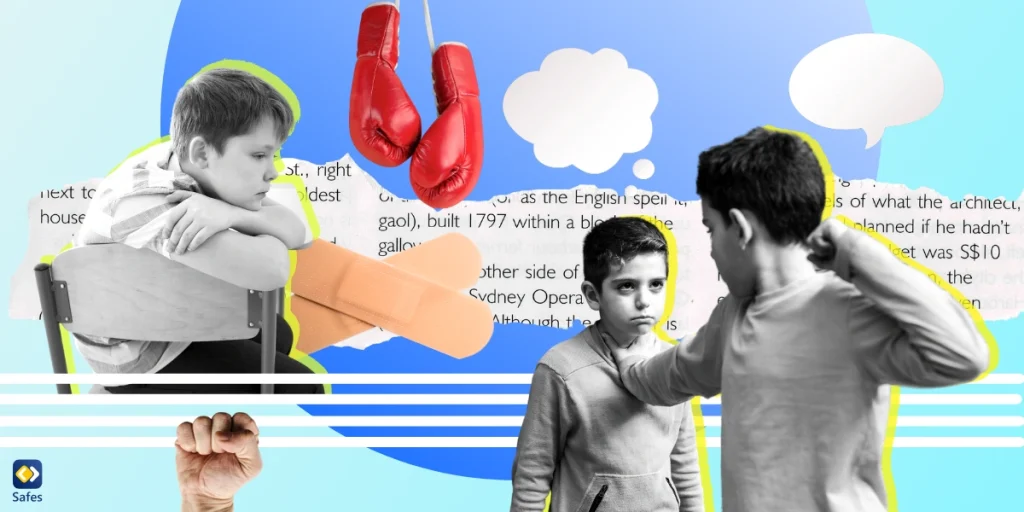
School Violence Statistics Parents & Teachers Should Know
Safes Content Team
- October 8, 2023
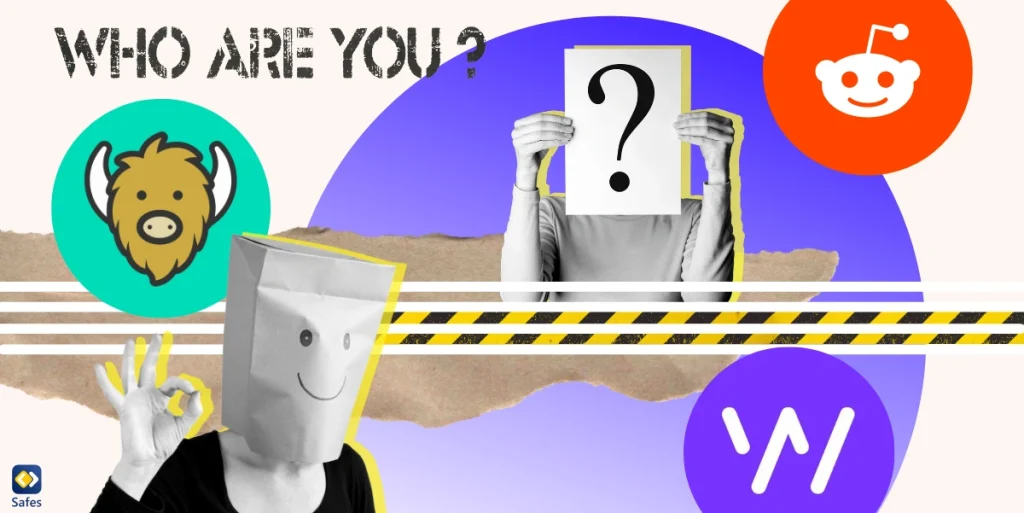
Pros and Cons of Anonymous Posting Apps For Children
Faraz Daneshgari
- February 12, 2024
- Terms of Service
- Privacy Policy
- Cookie Policy
- iPhone or iPad
- macBook or iMac
Get Weekly Parenting Must-Knows in Your Inbox
Deepen your parenting knowledge with our tips and tricks. Receive our editor’s top picks in your inbox once a week—no spam guaranteed.
Download Safes Kids for Chrombook
- Install the Safes Kids app on your Chromebook from Google Play.
- Pair Safes Kids with parent app. Follow the instructions in the app to pair your child’s device with your parent device.
- Add the Safe Kids Chrome extension . Open Chrome and go to the Chrome Web Store .
- Navigate to the Manage extensions page. Click the three dots in the top right corner of Chrome and select “Extensions”>”Manage Extensions”>”Details”
- Turn on “Allow in incognito mode” This will allow the Safe Kids extension to work in incognito mode, which is important if your child uses incognito mode to try to bypass the parental controls.
- Select Safes extension and follow on-screen instruction
Download Safes Kids for Android
Download the Android Kid’s app directly to get the full features!
Download Safes Kids App on Play Store
Download Safes Kids App on Safes.so
Safe Kids is available on the Google Play Store, but if you download it directly from our website, you will get access to Call and SMS monitoring feature , You can monitor the phone calls of your child’s device, as well as the contacts and messages they have sent and received, including those containing inappropriate content.
- Skip to primary navigation
- Skip to main content
- Skip to primary sidebar
Teaching Expertise
- Classroom Ideas
- Teacher’s Life
- Deals & Shopping
- Privacy Policy
Cognitive Activities For High School: Discussions, Research, Investigations, Challenges, And Presentation
April 18, 2024 // by Lauren Du Plessis
Stimulate critical thinking with a variety of cognitive activities that have been specifically designed for high school students. These activities are designed to enhance problem-solving and creative thinking skills, all while making learning enjoyable. Let’s dive right in and discover 22 creative cognitive activities that will engage and challenge your high school students!
1. Socratic Seminars
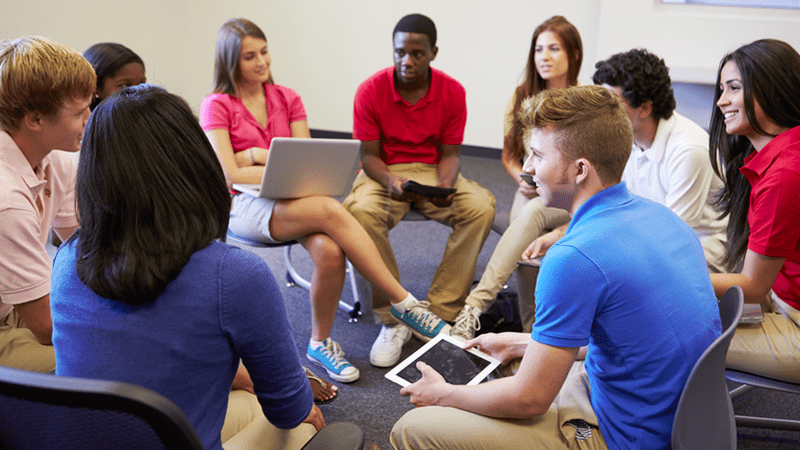
Encourage deep thinking and discussion by conducting Socratic seminars where you engage your students in thoughtful dialogue on a given topic; getting them to share their perspectives and support their arguments with evidence.
Learn More: We Are Teachers
2. Case Studies
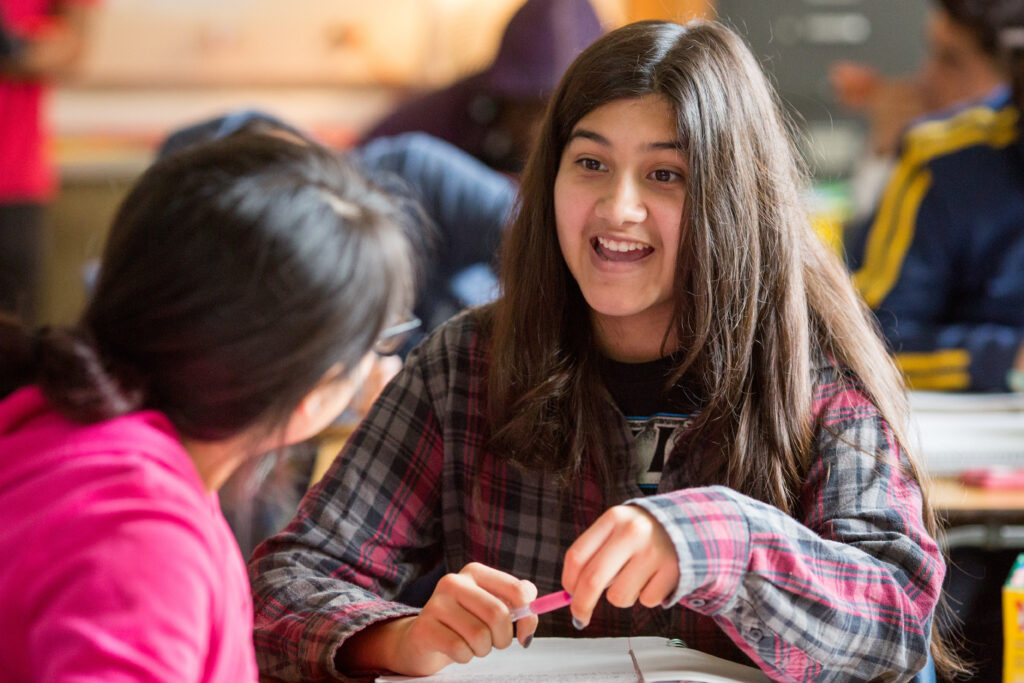
Why not get your learners to analyze real-life scenarios or case studies so they apply their knowledge to solve complex problems, foster critical thinking, and develop strong decision-making skills.
Learn More: CRPE
3. Debate Club
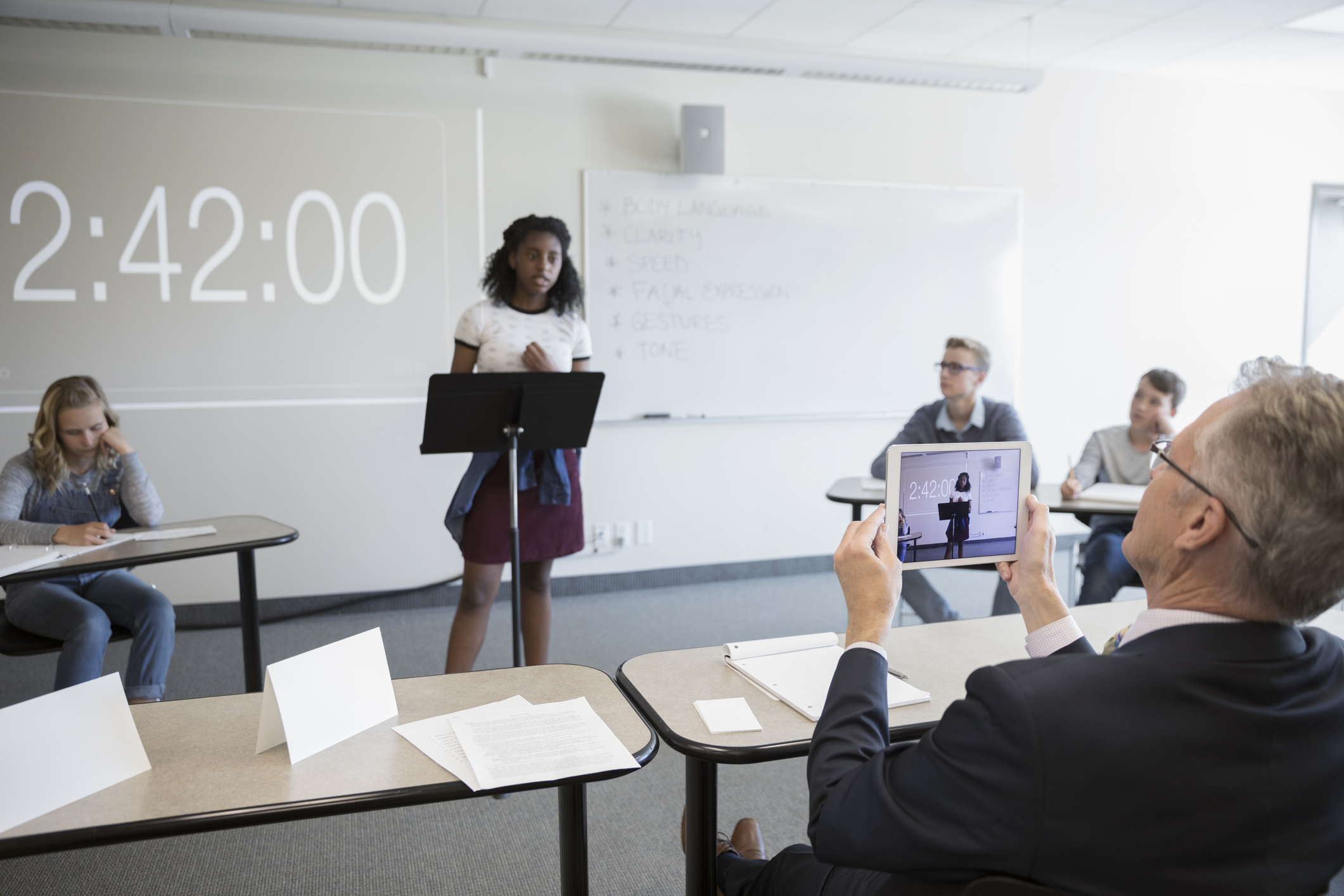
Organize a debate club where students will have opportunities to research and debate various topics; allowing them to develop persuasive arguments, analyze different perspectives, and enhance their communication skills.
Learn More: Love to Know
4. Scientific Investigations
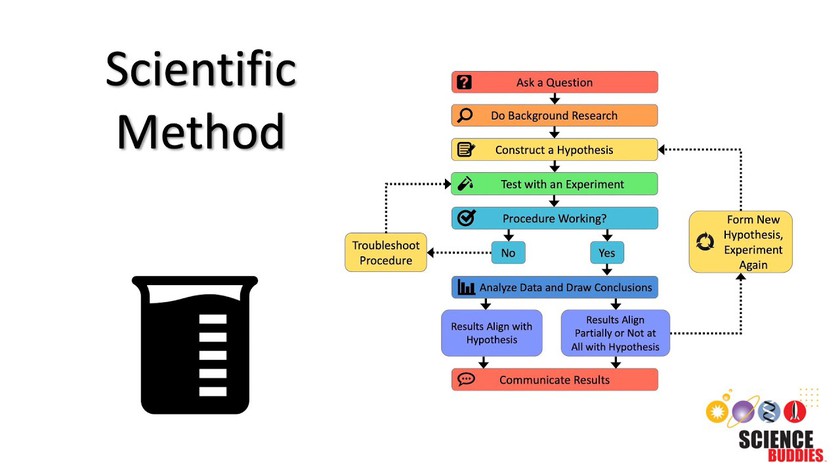
Take a deep dive into the world of scientific discovery with a host of investigations! Engage your students in scientific investigations that require hypothesis formulation, data collection, analysis, and drawing evidence-based conclusions. In doing so, you’ll be promoting critical thinking as well as scientific reasoning!
Learn More: Science Buddies
5. Design Thinking Challenges
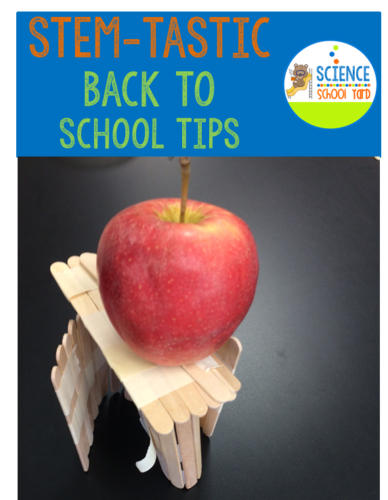
Did someone say STEM challenges? Challenge your students to engage in design thinking challenges that require them to identify problems, brainstorm solutions, and prototype innovative ideas; fostering creative thinking and problem-solving skills.
Learn More: STEM Activities for Kids
6. Current Events Analysis
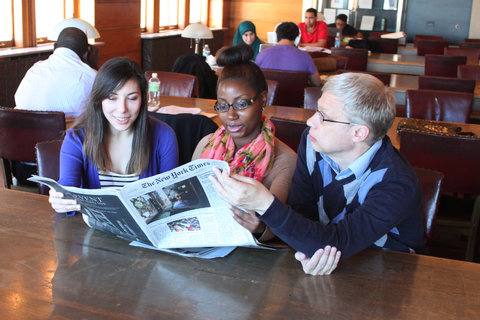
Assign students to analyze and critically evaluate current events articles, encouraging them to examine multiple sources, consider different viewpoints, and form informed opinions.
Learn More: The Learning Network
7. Mind Mapping
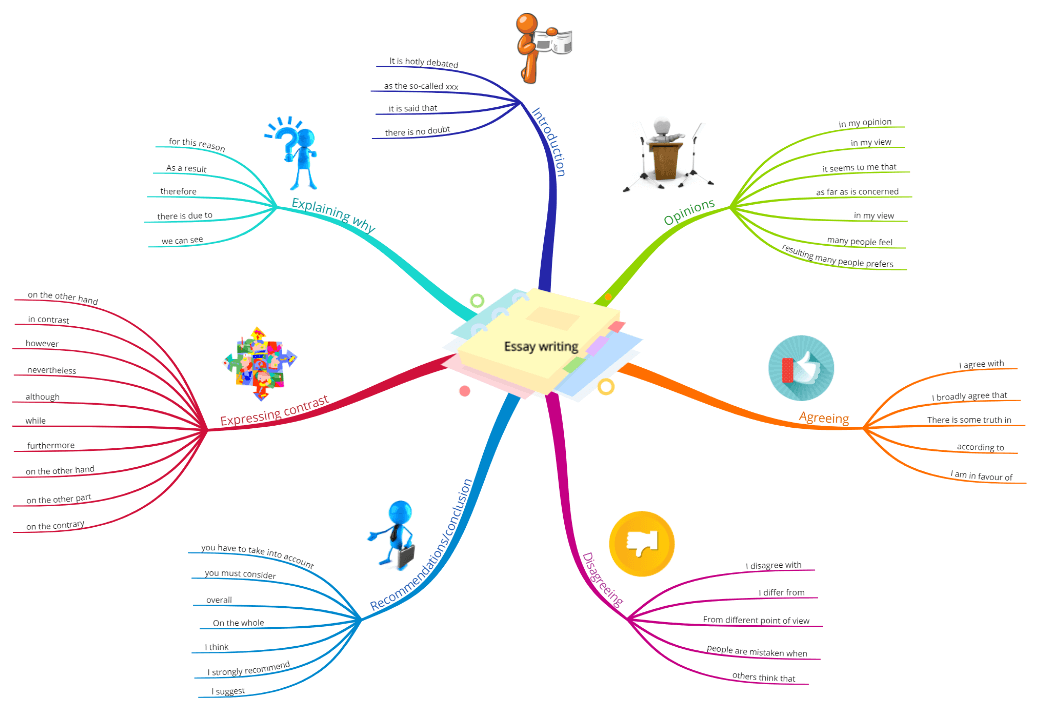
Introduce mind mapping as a visual tool for organizing and connecting ideas, allowing students to enhance their critical thinking, note-taking, and information synthesis skills. This skill is sure to prove helpful when it comes to learning new content and revising like a pro!
Learn More: Ayoa
8. Logic Puzzles
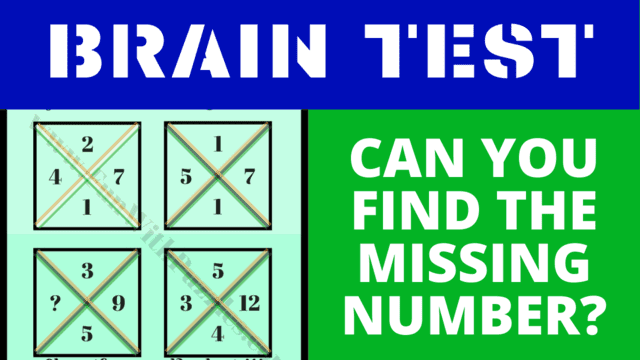
Provide logic puzzles such as Sudoku, crosswords, or jigsaw puzzles that challenge students’ deductive reasoning and problem-solving abilities, encouraging them to think analytically and develop strategies to arrive at solutions.
Learn More: Fun With Puzzles
9. Data Interpretation

Engage students in activities that involve interpreting and analyzing data sets, graphs, and charts, helping them develop essential skills in data analysis and drawing conclusions.
Learn More: Question Pro
10. Research Projects
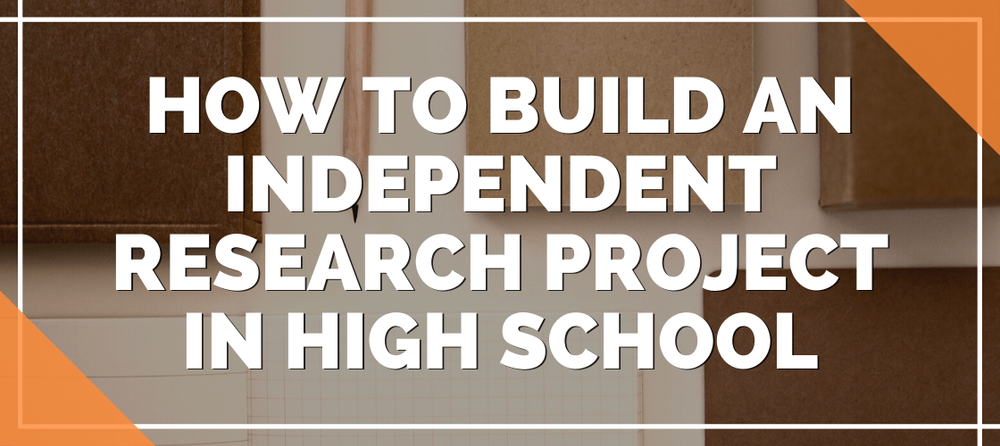
Assign research projects that require students to conduct independent investigations, analyze data, and present their findings, to the class fostering critical thinking, information literacy, and research skills.
Learn More: College Essay Guy
11. Ethical Dilemma Discussions
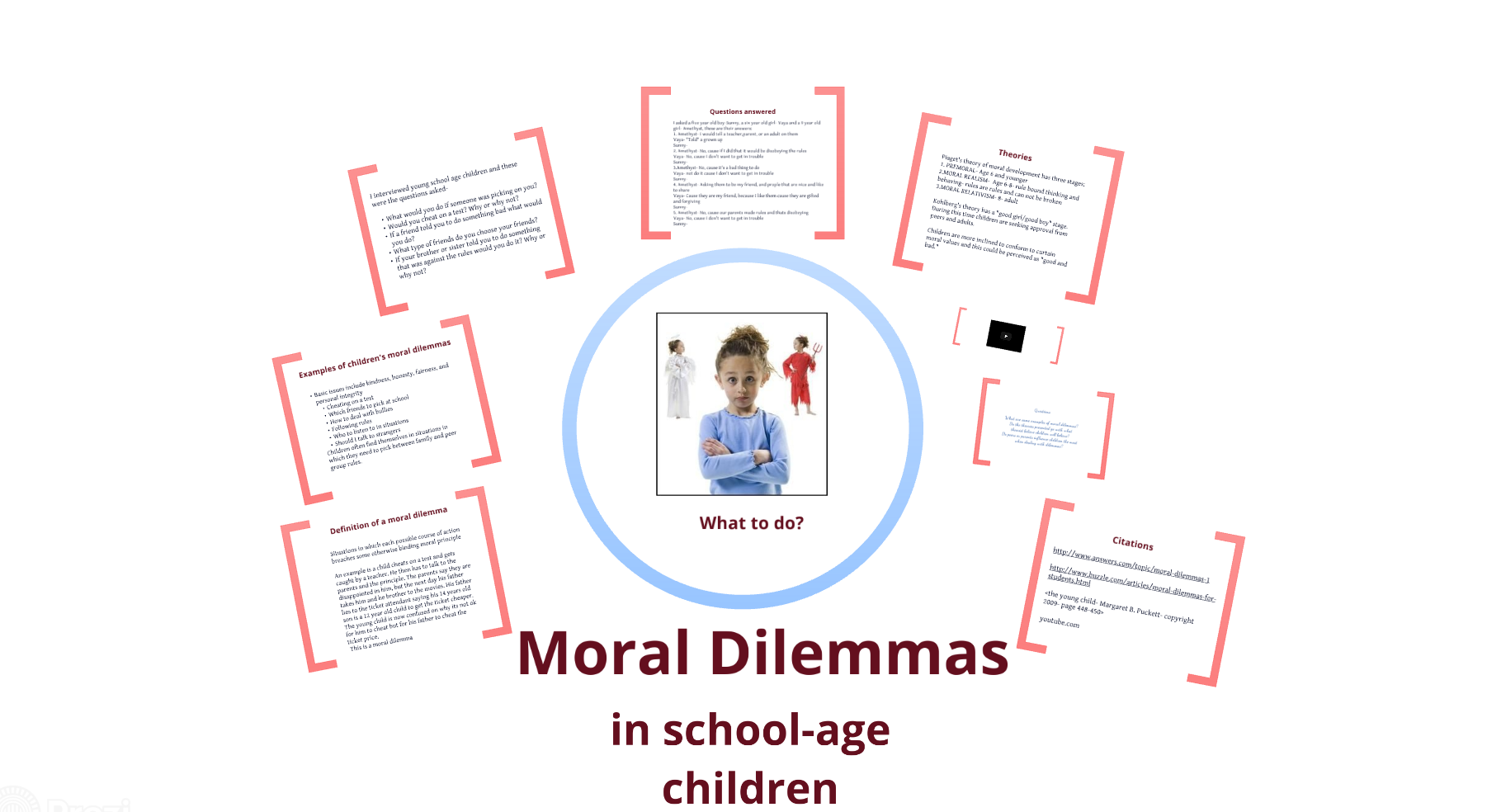
Present ethical dilemmas for students to discuss and debate, encouraging them to consider different perspectives, make informed judgments, and articulate their reasoning. Furthermore, by engaging in this activity, learners will be prompted to consider their very own moral compass and hopefully be more inclined to act in an ethical manner.
Learn More: Prezi
12. Creative Writing Prompts
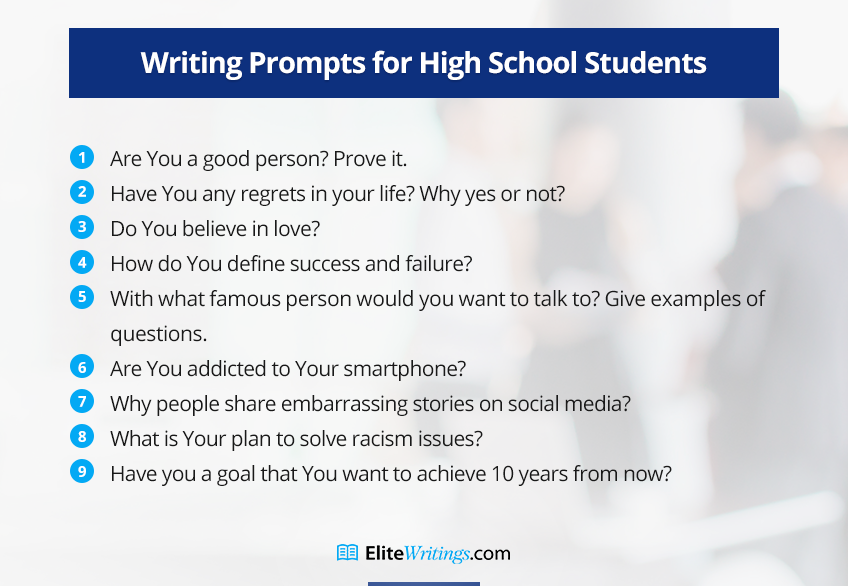
Here’s a cognitive activity that’s perfect for integration into your next English class! Provide creative writing prompts that challenge students to think imaginatively, develop complex storylines, and craft compelling narratives, promoting creative thinking and storytelling skills.
Learn More: Elite Writings
13. Problem-Based Learning
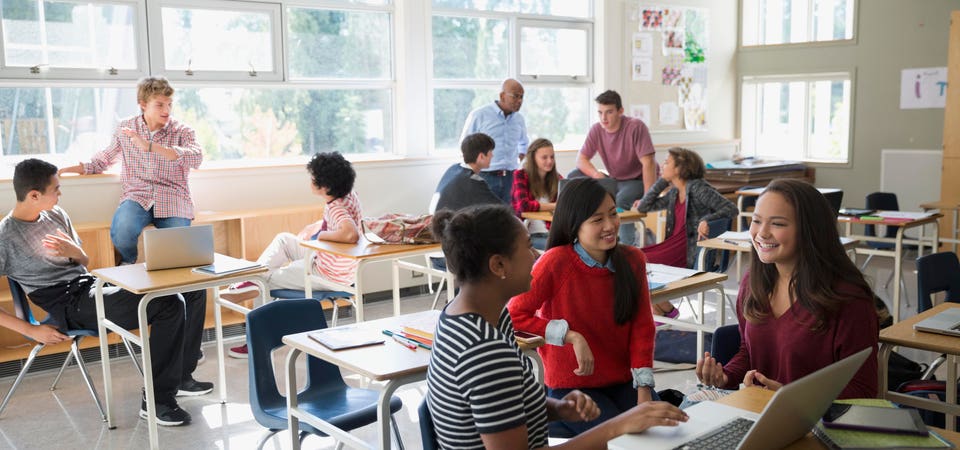
Implement problem-based learning activities that present authentic, open-ended problems for students to solve collaboratively, allowing them to develop critical thinking, problem-solving, and teamwork skills.
Learn More: Forbes
14. Virtual Simulations
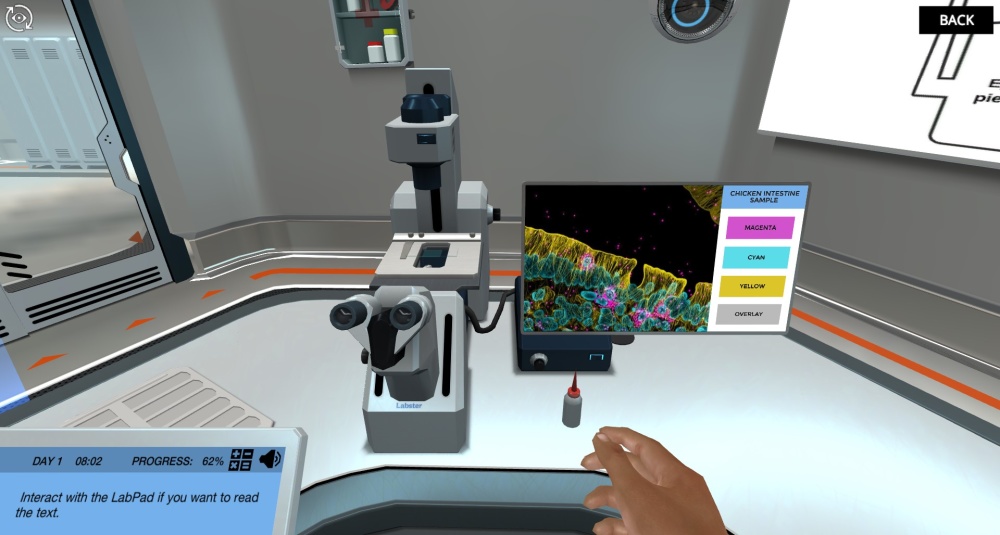
This activity is perfect for learners who are more technologically inclined and enjoy working online. Utilize virtual simulations or educational games that immerse students in simulated real-world scenarios, enabling them to apply critical thinking and problem-solving skills in a virtual environment.
Learn More: Labster
15. Philosophy Discussions
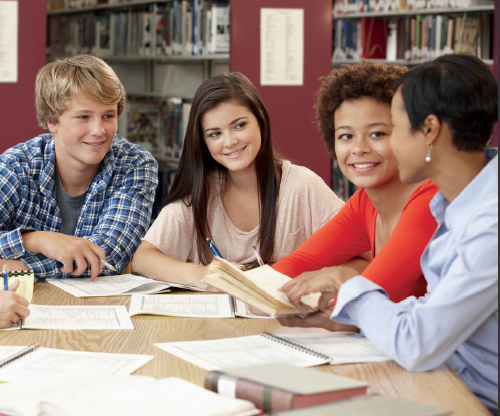
Engage your students in philosophical discussions by exploring thought-provoking questions, encouraging them to analyze and evaluate different philosophical perspectives.
Learn More: Teaching Times
16. Literature Analysis
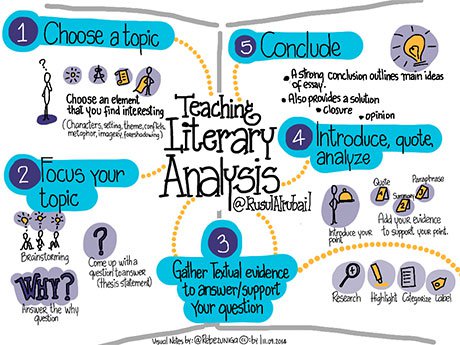
Assign literature analysis tasks that require students to critically analyze and interpret literary works, examining themes, symbolism, character development, and authorial intent.
Learn More: Edutopia
17. Coding Challenges
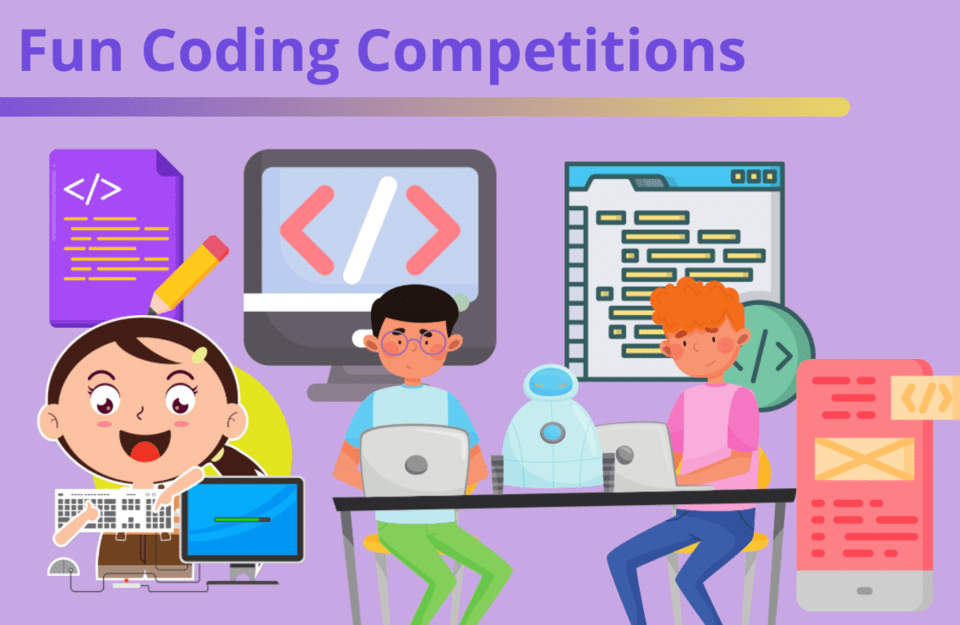
Calling all coding boffins! Introduce coding challenges that require students to think logically, problem-solve, and debug code, fostering computational thinking and algorithmic reasoning skills.
Learn More: Create & Learn
18. Historical Simulations
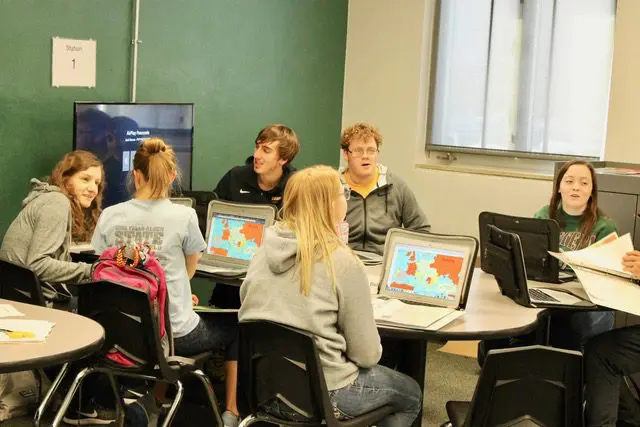
Engage students in historical simulations that recreate historical events or periods, allowing them to analyze multiple perspectives and understand the complexity of historical contexts.
Learn More: History Simulation
19. Media Literacy Analysis
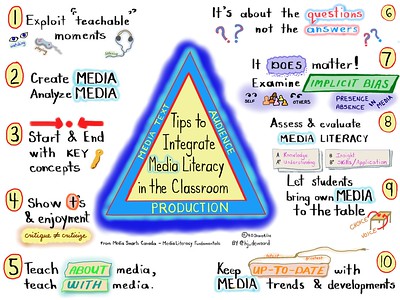
Guide students in critically analyzing media content; helping them understand biases, evaluate sources, and develop critical media literacy skills. They can explore media texts such as advertisements, news articles, or films.
Learn More: Study.com
20. Problem-Solving through Robotics
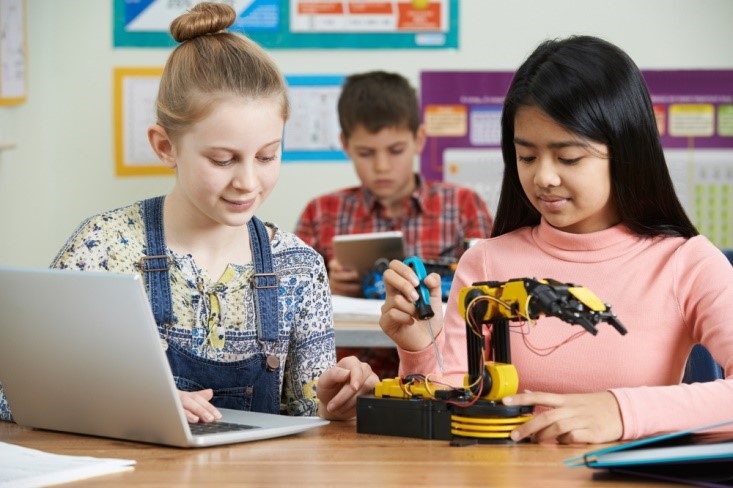
Integrate robotics activities into Engineering spheres and have your learners design and program robots to solve specific challenges; promoting critical thinking, problem-solving, and computational skills.
Learn More: The Edvocate
21. Philosophical Debates
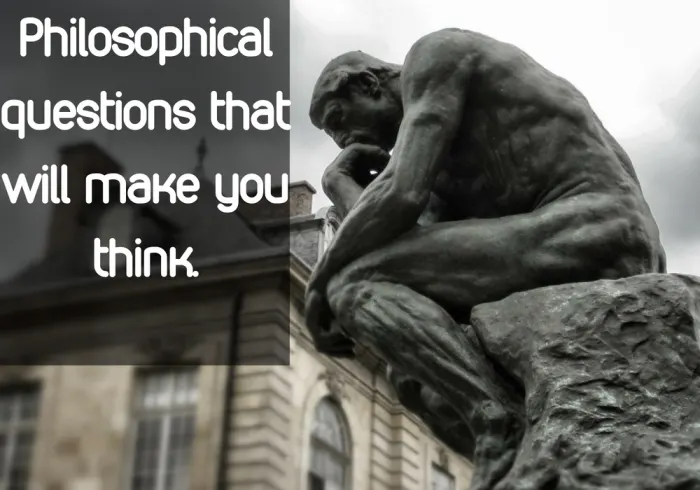
Philosophy is one of the time-honored subjects in the debating realm! So, why not organize philosophical debates where students engage in thought-provoking discussions on philosophical concepts and ethical dilemmas?
Learn More: Owlcation
22. Collaborative Research Presentations
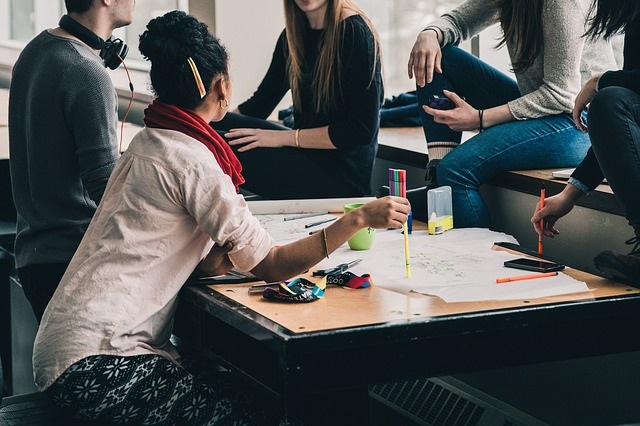
Assign group research projects where students collaborate to research, analyze data, and create presentations, developing their critical thinking, teamwork, and presentation skills.
Learn More: Granite State College

IMAGES
COMMENTS
Aug 9, 2023 · Problem-solving scenarios offer a combination of various situations that test the thinking skills and growth mindset of high school students. The below-mentioned scenarios are perfect for implementing problem-solving skills simply by allowing open discussions and contributions by students.
Problem solving scenarios may be easy to find online, but this selection is geared specifically for speech therapy social skills training.
Mar 15, 2017 · Beginning in high school or earlier, problem solving enables students to apply what they’ve learned as opposed to merely recalling information that they have been spoonfed, equipping them with...
Apr 23, 2024 · High school problem-solving activities build on foundational skills while providing opportunities for deeper exploration and application. Here are some elevated ideas tailored to high school students:
Use the 71 social problem-solving scenarios to have your students get great experience practicing how to solve a social problem. Also, included are 6 blank scenarios. Then laminate them so you can use them over and over again.
Feb 11, 2024 · Discover engaging problem solving activities that foster critical thinking and problem solving skills. From immersive escape rooms to literature dilemmas, these activities are ideal for sparking student interest.
Apr 20, 2024 · In this comprehensive article, we will explore a wide range of problem-solving activities tailored specifically for high school students. From hands-on projects to thought-provoking scenarios, these activities aim to develop essential skills such as logical reasoning, decision-making, and innovative thinking.
Now, let’s explore five practical problem-solving activities that can be implemented in high school classrooms: Brainstorming is a popular problem-solving technique that encourages students to generate ideas and solutions in a group setting. It promotes collaboration, creativity, and open-mindedness.
Mar 29, 2023 · Problem-solving activities are a great way to engage high school students in critical thinking. These activities can range from simple puzzles and games to complex group projects and challenges. They help students develop important skills such as communication, creativity, and decision-making.
Apr 18, 2024 · These activities are designed to enhance problem-solving and creative thinking skills, all while making learning enjoyable. Let’s dive right in and discover 22 creative cognitive activities that will engage and challenge your high school students! 1. Socratic Seminars.